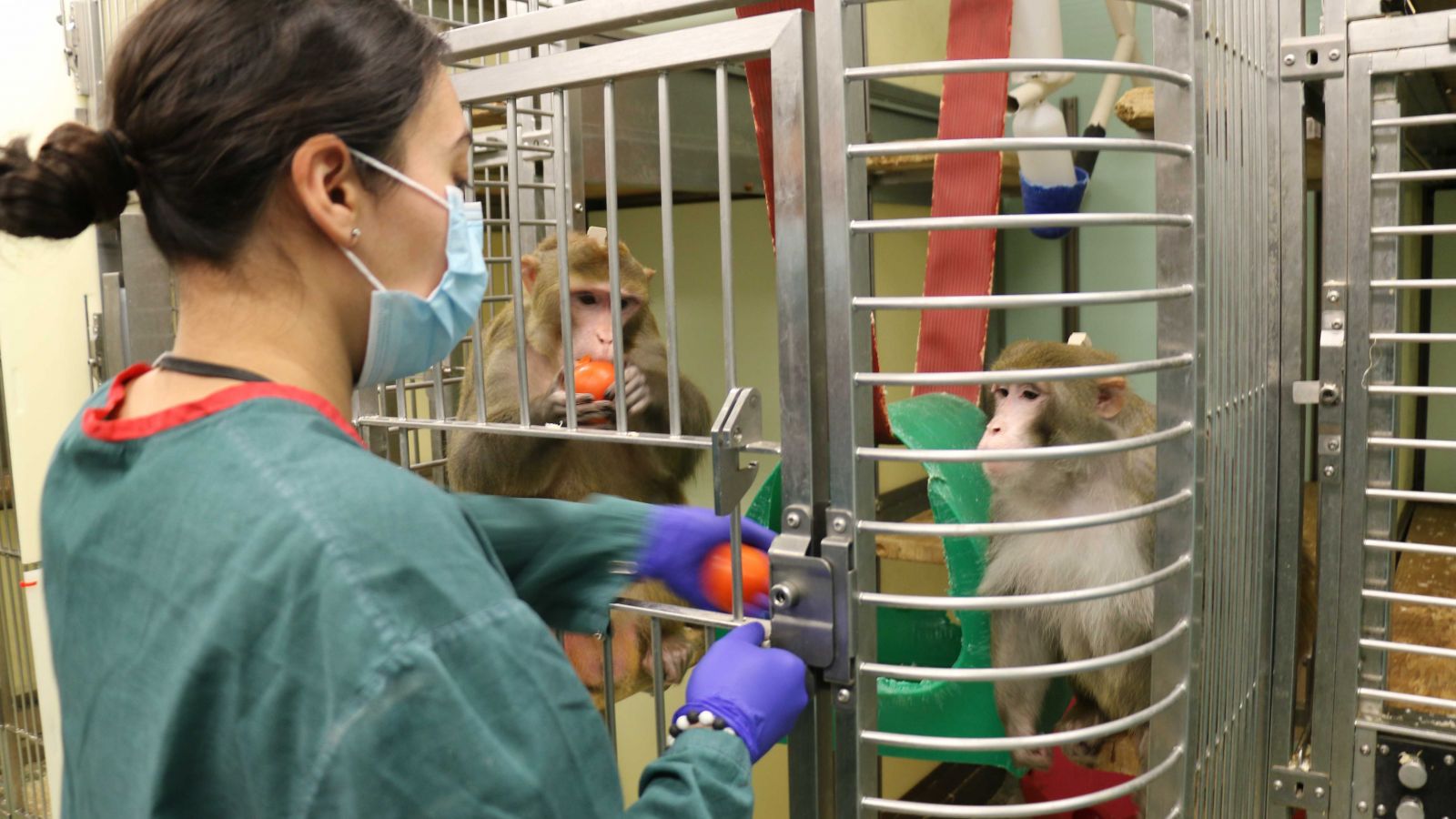

On this page
- Which monkeys are used in scientific research?
Why are monkeys used in research?
- Why do some monkeys have cranial implants?
Where do research monkeys come from?
How are the monkeys looked after?
The future of research in monkeys, what the experts think.
- What types of research are monkeys used in?
Areas of research that have relied on monkeys
Which monkeys are used in scientific research .
The most commonly used monkeys in medical research are: Rhesus macaques (Macaca mulatta); Cynomolgus macaques (Macaca fascicularis); and Common Marmosets (Callithrix jacchus).
The order of primates can be broken down into three groups: apes; Old-World monkeys; and New-World monkeys. Macaques belong to the Old-World monkeys and are native to South and Southeast Asia. Marmosets are New-World monkeys, native to South America. Although the great apes (Orangutans, Chimpanzees, Bonobos, Gorillas) are our closest relatives, using a great ape in any regulated procedure is banned under UK legislation.
The next-closest ape species to humans are the Old-World monkeys. Humans share around 94% of their genetic code with macaques, and 91.7% with marmosets. This is compared to 85% genetic similarity between humans and rodents , making primates both physically and genetically the most useful comparison to humans in the animal kingdom.
Each year, around 2,000 – 3,000 primates are involved in experiments in Great Britain. This makes up 0.1% of the animals used in research .
Because Old-World monkeys are anatomically, physiologically, and genetically so similar to humans, they can be useful models for human disease. Macaques and marmosets have similar brains, muscle structure and reproductive and immune systems to humans. This means research with monkeys can provide results which are more relevant to humans compared to information obtained from mice or rats.
Roger Lemon, retired Professor of Neurophysiology at the Institute of Neurology, UCL, goes even further and says:
“I am absolutely certain that our knowledge of the human motor system would be very poor indeed without the wealth of neuroanatomical and neurophysiological studies carried out in monkeys.”
Monkeys are complex animals with complex needs, for example needing larger enclosures, additional enrichment, and social housing. Monkeys are very intelligent and sensitive animals, which is why they are protected by stricter regulations than other species and can only be used when it is absolutely necessary.
Why do some research monkeys have cranial implants?
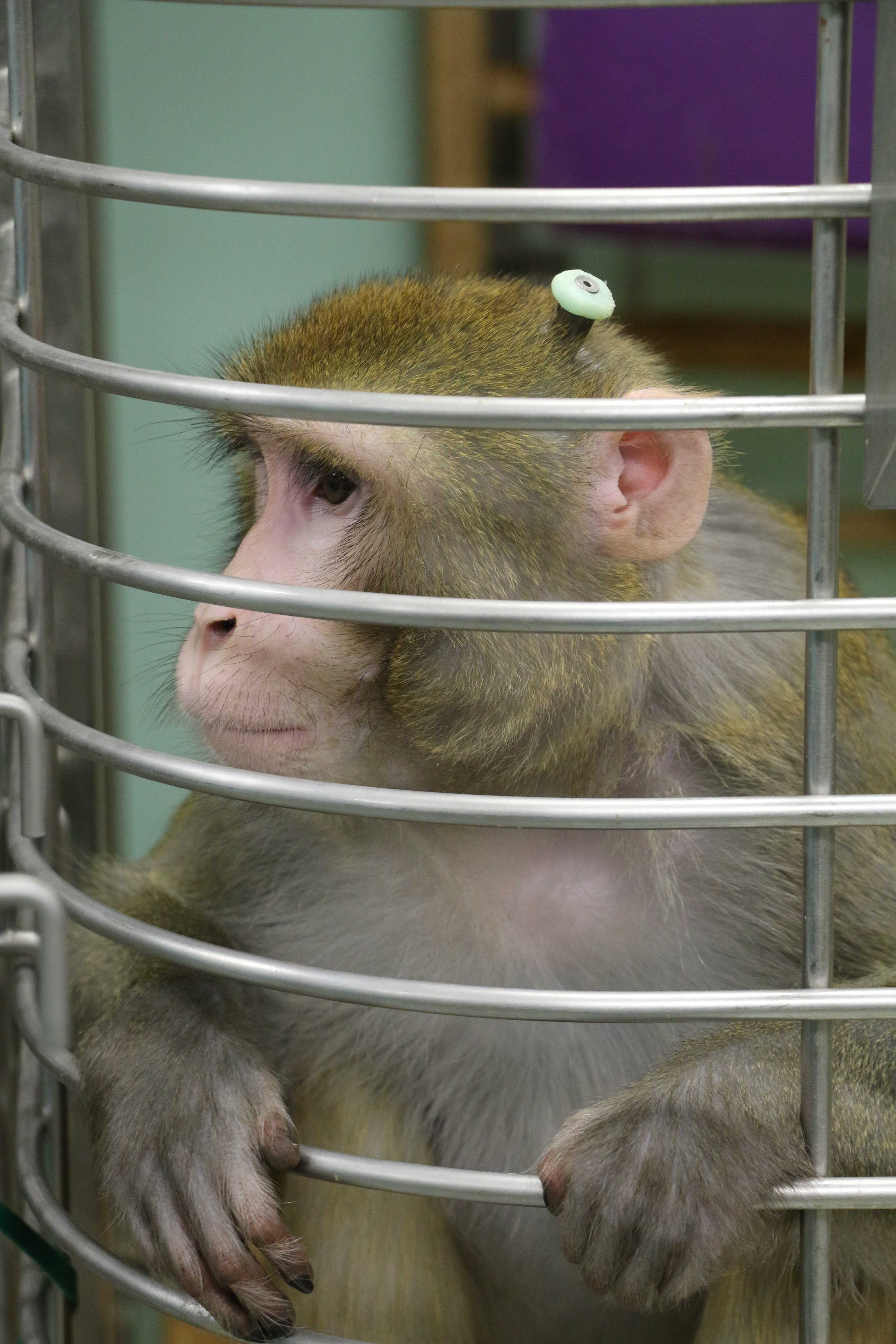
Cranial implants or head posts are implanted into the monkey's skull whilst the animal is under anaesthetic. Implants must be monitored daily to ensure that wound healing is not impaired and no infection has arisen. Surgical aftercare such as pain relief is always given when needed.
Where do research monkeys come from?
In Great Britain, it is prohibited to conduct experiments on wild-caught monkeys due to the impact that capture and subsequent experiments have on their wellbeing, as well as the increased risk of disease transmission.
As a result of this, all monkeys involved in experimental procedures in Great Britain are either F1 generation (captive offspring of wild-caught individuals) or F2+ (offspring of captive individuals). Where possible, F2+ generation individuals are used instead of F1 individuals. You can see the numbers of F1 and F2+ individuals used in animal research in Great Britain in 2022 in the Statistics of scientific procedures on living animals, Great Britain: 2022 (Section 3.1.3).
A key source of cynomolgus macaques for research is breeding centres in Asia and Africa, including colonies in Mauritius, where macaques are non-native and are considered an invasive species and agricultural pest. Macaques that would otherwise be culled to control the population are bred to produce offspring that can be used in research.
In Great Britain, there are several establishments which are licensed to breed macaques solely for research purposes, for example, the Medical Research Council’s Centre for Macaques (CfM).
Animal welfare is a legal and ethical responsibility for everyone who works with research animals. In the UK, lab animals are cared for by animal technicians who have undergone extensive training on the care and welfare of animals in a laboratory setting.
Within the lab, senior animal technicians and Named Animal Care and Welfare Officers (NACWOs) are responsible for each animal’s health and wellbeing and are not involved in the research. Animal technicians spend every day with the animals observing them, ensuring they are experiencing as little suffering as possible, and enriching their lives with activities that mimic the natural behaviours that would be displayed in the wild, for example foraging.
All research establishments in the UK must have a veterinarian on call 24 hours a day in case of emergencies.
Housing
Primates are highly intelligent and social animals, and require large enclosures that allow individuals to walk, climb, swing and leap. Housing is designed to suit the unique biology of each species. For example, wild marmosets spend most of their time in trees and so their housing is made with this in mind: complex vertical structures like bridges, swings and perches above human head height are key to ensuring that marmosets can express their natural behaviours. To learn more about marmoset housing, click here .
Macaques, however, use floor space more, so ground-based structures are important as well as vertical spaces. To learn more about macaque housing, click here .
Both macaques and marmosets are highly social, living in multi-male, multi-female groups in the wild . To allow for natural social interactions, macaques are housed in pairs or social groups, and marmosets are housed in family groups. Animals may be isolated under rare circumstances, for example, if they are recovering from an illness or surgery and need to be quarantined or if being in a social group poses a danger to them.
Enrichment
Enrichment can also be structural (e.g. swings, climbing apparatus and water tanks), food-related (e.g. food puzzles and foraging) or other sensory stimuli (e.g. smells and sounds).
A prime example of enrichment for monkeys is spreading food, such as grains or dried fruit, around the home cage. (see video ). This encourages the monkeys’ natural foraging behaviour and keeps them occupied for long periods of time.
Learn more about the enrichment used for marmosets on the University of Stirling’s marmoset care website.
Learn more about the enrichment used for macaques on the NC3Rs macaque website or head to the macaque holding room 1 of the University of Oxford lab tour to find out more about enrichment. Visit the food preparation room to find out more about how food is prepared for macaques.
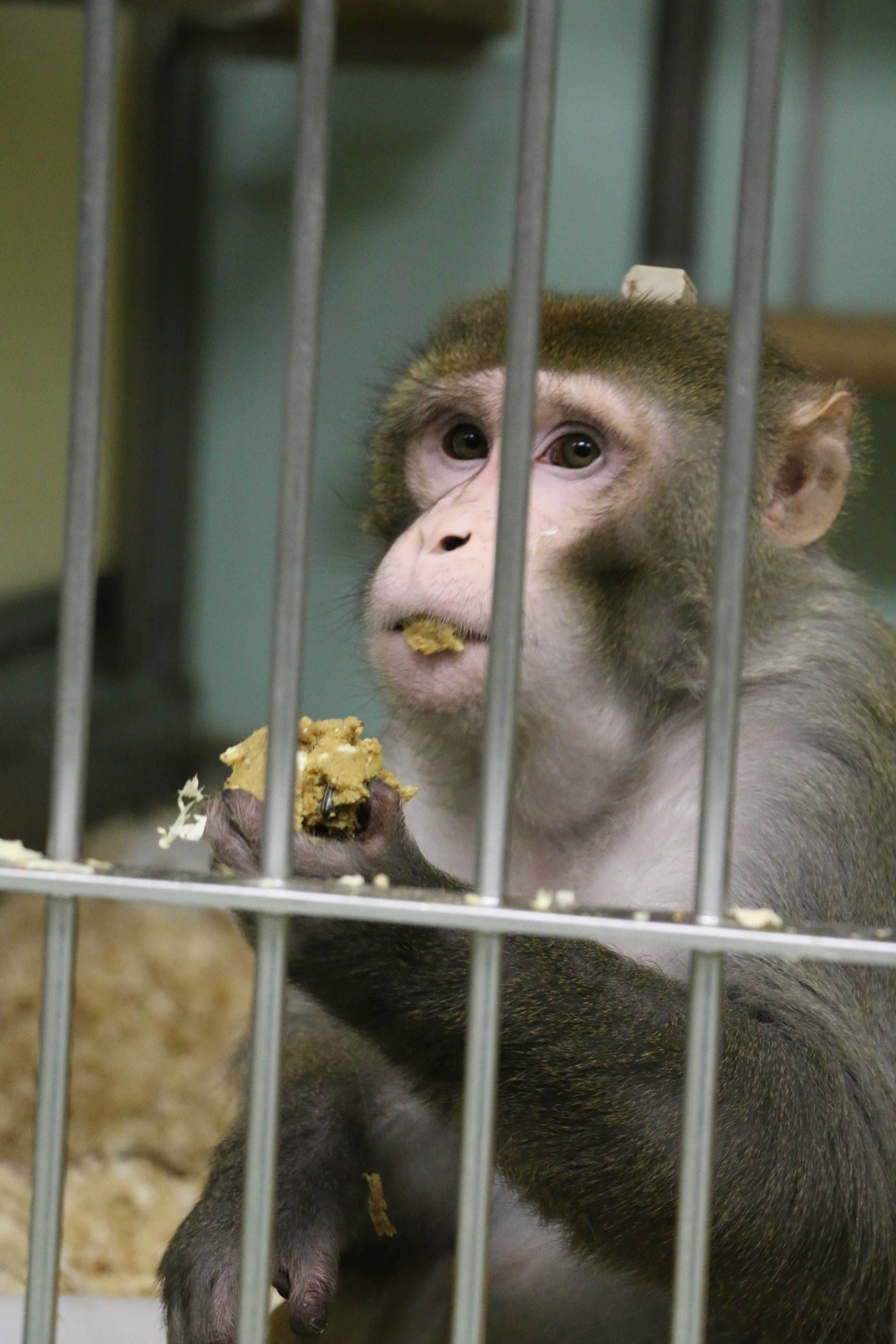
Training
In order to minimise the stress caused by captivity and research procedures, monkeys need to have a good relationship with their keepers. One of the ways that this is achieved is through positive reinforcement training. Training helps to reduce stress by putting the ball in the animal’s court. By rewarding desired behaviours, the animal learns to associate those behaviours with rewards, and is therefore more motivated to complete those tasks.
“We are finding that these monkeys can learn these tasks very quickly within their natural environment. It’s sort of like enrichment. It’s an interesting, fun game for them to play,” explains Professor Andrew Jackson, of Newcastle University.
Training also removes the need for some procedures to be performed. For example, taking blood used to require the animal to be anaesthetised, but now animals are trained to present their arms or legs for injections (see video ). This is much less stressful for the individual animal and the animal carers.
Prof Jackson describes how this is approached at Newcastle University: “We want to see how much of the training we can actually do within the animals’ natural environment, so within the home cage where the monkeys live. We have developed a system that we can attach to the front of the cage, and the animals are free to come into this system and perform a simple task.”
Check out the training pages of the NC3Rs website for more information about training research animals.
Head to the Main Corridor Exit of the University of Oxford lab tour to hear more about how they train macaques for experiments.
Learn more about training animals to move to desired locations at the MRC Centre for macaques .
The use of monkeys in research remains controversial and has been the subject of vigorous campaigning by animal rights groups in the past. Many independent and expert enquiries such as the Weatherall Report have concluded that there is a strong case for using monkeys to advance scientific and medical knowledge and to assess the safety of new medicines. The use of monkeys, like other animals, should only be undertaken when there is no alternative, and should be subject to careful regulation.
Most research monkeys are macaques or marmosets. They are used in relatively small numbers (they make up around 0.1% of research animals) but they have been important in many major medical advances, for example, the polio vaccine, life support systems for premature babies, and deep brain stimulation for Parkinson’s disease.
Currently, the main areas of primate study are infectious diseases to develop vaccines and treatments for HIV/AIDS and malaria. Monkeys are also used in neuroscience to better understand the brain and treat conditions ranging from Alzheimer’s disease to schizophrenia. They are important in research into reproduction, fertility and foetal development, and they are also used in the safety testing of new medicines and vaccines.
In 2017, the Scientific Committee on Health, Environmental and Emerging Risks (SCHEER) released an updated opinion on the use of primates in research. Here is what they said:
“The use of non-human primates remains necessary for certain types of research, but when their use is required to be determined on a case to case basis and only if no viable alternatives are available it is essential to adopt the highest standards of non-human primates housing and husbandry and to follow best practice in the conduct and refinement of scientific procedures.”
The topic of using monkeys was the subject of the Weatherall Report in 2007. At the time the government’s Chief Scientific Advisor, Sir David King FRS, said:
"Although rare, the use of primates in medical research and testing is invaluable, as an essential aspect of work which provides the best hope for breakthroughs in important areas such as neurodegenerative disorders and for aspects of immune and reproductive functions."
MRC press release responding to the Weatherall Report, June 2007.
"There is a strong scientific case for the carefully regulated use of non-human primates where there are no other means to address clearly defined questions of particular biological or medical importance."
Weatherall Report: The use of non-human primates in research, December 2006:
"Primates have been used in research aimed at understanding how complex brains work, as their neurological development and higher cognitive functions are very similar to humans … Animal [primate] disease models were also used for research on hepatitis C, and polio."
Nuffield Council on Bioethics, The ethics of research using animals, May 2005:
"... for certain experiments there are no alternatives to the use of non-human primates. Such experiments may be needed, for example, during the development of drugs and vaccines for prevention and cure of disease such as AIDS, TSE1, malaria, and influenza".
European Commission Scientific Steering Committee (SSC), The Need for Non-Human Primates in Biomedical Research, April 2002:
"Many significant advances in modern medicine have been based on research involving primates."
What types of research are monkeys used in?
Monkeys have been used to study many different areas of human and animal disease. They have been essential in research into neurological disorders such as Parkinson’s disease, reproductive disorders, understanding how vision works, and the development of vaccines.
Like humans, monkeys see in colour and have binocular vision , which is why they have been used to better understand how humans process visual information from the 3D environment.
Rhesus macaque monkeys were vital in the race to develop an effective vaccine against SARS-COV-2, the virus that causes COVID-19. Monkeys were used to identify the most promising candidates for vaccines and ensure that they were safe enough for human volunteers to take in the large-scale clinical trials that took place.
Marmoset monkeys are predominantly used for research into Parkinson’s disease. Since the accidental discovery of MPTP, a substance that destroys a part of the brain and causes the symptoms of Parkinson’s, MPTP is used to induce the symptoms of Parkinson’s in marmoset monkeys. This has helped scientists explore new treatments for Parkinson’s disease.
More examples of how monkeys are used in research are listed in our iBook: Primates in Medical Research .
Alzheimer's disease
Like Parkinson’s, Alzheimer’s is a neurodegenerative disorder, meaning that it involves the progressive loss of nerve cells in the brain over time. In the case of Alzheimer’s, this is thought to be caused by the build-up of material called amyloid plaques around the nerve cells, and tangles of fibres within the cells, reducing their function and connectivity.
There are several animal models of Alzheimer’s disease, mostly rodents but also monkeys. Monkeys are essential in this research as drugs developed using only rodent models show a much lower efficacy when translated to human trials.
Monkeys have a shorter lifespan than the typical human. Most monkey species live for 20-25 years, although some can reach 40 and others only live to 12. Because monkeys have a shorter lifespan than humans, researchers can more easily investigate the process of brain ageing and how diseases progress over time.
More about primates in Alzheimer’s research
22/09/2017: Dr Mark Dallas Reddit Ask Me Anything
06/07/2018: Alzheimer’s Researchers win 2018 Brain Prize
26/05/2021: Can you give a brain organoid Alzheimer’s?
08/11/2022: The animal research behind a new Alzheimer's drug
Between December 2019 and August 2023, the World Health Organisation estimates that Covid-19 killed a minimum of 6.9 million people.
The outbreak of Covid-19 resulted in the world’s first pandemic on a global scale and an unparalleled response from the scientific community. For the first-time, scientists across the world mobilised to tackle the same issue at the same time – preventing and treating Covid-19.
Animal research in various species was critical to the rapid development of a Covid-19 vaccine but none more so than monkeys, whose immune response so closely resembles our own. Rhesus macaque monkeys were irreplaceable during the search for a Covid-19 vaccine as they were one of the only animals that responded to SARS-Cov-2 in a comparable way to humans.
Each of the vaccines approved for use against Covid-19 in the UK was tested on monkeys before being given to human volunteers in clinical trials.
A 2022 study from Imperial College London looked at the global impact of vaccines in the first year of the Covid-19 pandemic. Using mathematical models and data on excess deaths from 185 countries and territories, they concluded that 19.8 million out of a potential 31.4 million Covid-19 deaths were prevented worldwide.
The pandemic may be over, but research into new treatments, more effective vaccines, and the long-term impacts of Covid-19 on the body continues. In addition to this, new ways of preparing for future pandemics are being created to reduce the suffering that diseases like Covid-19 cause.
See our Covid-19 page for more.
More about primates in Covid-19 research
Oxford Astrazeneca vaccine timeline
11/02/2023: Inhalable SHIELD protects lungs against COVID-19 .
01/04/2022: Long-term effects of COVID-19 shown in rhesus macaques
08/12/2021: COVID-19 research must go on
18/10/2020: Primate role in COVID-19 vaccine research
07/05/2020: Remdesivir trials effective against coronaviruses in animals and humans
18/03/2020: Warning signs of the coronavirus: why we knew about it and couldn't stop it
Heart disease
According to the World Health Organisation, heart disease is the leading cause of death in the world . In the UK, heart disease kills around 460 people each day.
Monkeys are ideal models of heart disease , not only because of their genetic and physiological similarities to humans, but also because key aspects of heart disease in humans, such as atherosclerosis, high cholesterol and diabetes, also occur naturally in monkeys. The fact that these occur naturally means that environmental risk factors for heart disease can also be studied, allowing us to look at the causes of heart disease.
Primate research has also played a role in the development and further evaluation of drugs which aim to reduce the risk of heart disease, for example statins.
More about primates in heart disease research
03/07/2023: Researchers measure chimpanzee heart rates through facial movements
23/02/2021: Preclinical Study Shows Safety, Efficacy, and Durability of Lowering LDL-Cholesterol Levels Long-Term in Non-Human Primates
06/07/2018: Heart disease research in primates 2018
02/07/2018: Stem cells restore function in primate heart-failure study
Human immunodeficiency virus ( HIV ) is a virus that attacks particular types of cells in the immune system, leading to much weaker defences against disease or infection. The development of disease in a person with HIV is called AIDS.
Although primates do not suffer from HIV, they show AIDS-like symptoms caused by a closely related virus called simian immunodeficiency virus (SIV). Studies in macaques have led to advancements in our knowledge of how the body’s immune system responds to HIV/SIV, and how to combat the disease through anti-viral treatments and vaccines.
While a cure for HIV has not been identified, combinations of drugs have been identified from studies in primates that have been shown to restore the immune defences of HIV patients.
Visit our researching disease page for more information about HIV/AIDS .
More about primates in HIV research
UAR update: Primate briefing number one
25 years of primate research and HIV
01/03/2019: Human diseases are threatening chimpanzees
06/07/2018: HIV advances made in 2018
09/03/2018: New hope for HIV vaccine found in monkey trials
24/03/2016: Giving antibodies to infant macaques exposed to HIV-like virus could clear the infection
26/02/2010: HIV vaccine ready for trials
MERS , or Middle East respiratory syndrome, comes from MERS-CoV, a coronavirus that occurs in dromedary camels. This zoonotic disease has made the jump to humans several times.
Compared to Covid-19, MERS has a higher mortality rate, but it is much harder to transmit between humans. There is currently no vaccine available for MERS.
Current research aims to develop vaccines to help protect people from this disease. Many of the pre-clinical trials for MERS vaccines involve macaques or marmosets which respond to the disease in a similar way to humans.
More about primates in MERS research
30/07/2015: New vaccine to fight MERS in macaques
Motor and sensory research
One aspect that sets monkeys apart from other animal models is the way in which their bodies move, and the way in which the brain communicates to the muscles in the arms and hands. This is an important characteristic when studying afflictions like paralysis and their treatment.
Transcript of an Interview with Professor Andrew Jackson about macaques in movement research.
Like humans, Monkeys have binocular vision (i.e. two eyes facing forwards) as well as many parts of the eye that are also present in humans. This makes them extremely useful in vision research. One area of importance is where vision is completely lost due to the death of cells that process incoming light. The affected part of the eye, called the macula, which is only present in humans and other primates, means that monkeys are the only suitable model for these diseases.
Additionally, the genes that cause these diseases are also present in monkeys, meaning that we can investigate the genetic and environmental factors that contribute to these diseases, as well as targeted treatments to restore eyesight.
Neuroscience
One of the areas where primates are of unique importance to medical research is in studying the brain. While certain aspects of other organs can be replaced by non-animal technology, there is currently no way of studying brain function without the use of animals.
As Chris Petkov, Professor in Comparative Neuropsychology at Newcastle University puts it:
“Many of these technological improvements allow us to glimpse at the human brain. But it is only that: a glimpse. Although one might think that animal research might become obsolete thanks to these machines, the understanding of the human brain and the neurosurgeries performed today relied on and still rely on information gathered by primate neuroscience.”
Primates are key to this research due to the similarity of human and primate brains. Our brains are similar in size (relative to body mass) have the same physiological regions and show similar levels of connectivity compared to other animals. As a result, primates have helped to advance our knowledge of numerous conditions, including Parkinson’s disease, Alzheimer’s and stroke. Some major conditions are explained further below.
More about Primates in Neuroscience
06/07/2022: Why are animal studies important in neuroscience research?
04/06/2021: Why do we need to use animals in neuroscience research?
UAR article: “ The importance of non-human primates in neuroscience ”
25/07/2011: Primate research overview
Check out some neuroscience labs in “Animal holding room 2”, ‘Behavioural testing room”, “Behavioural testing control room” and “MRI room” at the University of Oxford lab tour .
Parkinson's disease
Parkinson’s disease is characterised by the loss of dopamine-producing nerve cells in a part of the brain named the substantia nigra . Parkinson’s sufferers experience involuntary shaking, slow and uncontrolled movement, and stiffness, which becomes progressively worse over time. As such, Parkinson’s is categorised as a neurodegenerative condition.
There are several ways in which monkeys are used to study Parkinson’s disease, from naturally occurring ageing monkey models, to genetic modification. Perhaps the most unique and famous technique involves the use of the chemical MPTP, which creates parkinsonian-like symptoms.
Primate models have been instrumental in understanding the brain areas involved with the disease, and the surgical and non-surgical treatments for Parkinson’s. For example, monkeys were used to better understand the process of deep brain stimulation, where an electrical current is used to stimulate specific parts of the brain continuously ( click here to see this in action ). Ultimately, work in primates led to more precise stimulation, and a more effective treatment of symptoms.
More about primates in Parkinson’s research
Check out our video explaining Marmosets in Parkinson’s research
Reproduction
Several primate species have similar reproductive biology to humans, including menstruation and menopause. As a result, primate research has been essential for the study of pregnancy loss, infertility, ovarian and uterine disorders.
For example, researchers have found that conditions like endometriosis occur naturally in rhesus macaques. Research in these animals has led to advances in treatments of the disease, including monthly antibody injections that reduce inflammation and endometrial tissue formation.
Macaques are also an important model of human menopause as they undergo the same hormone changes as humans and respond similarly to hormone replacement therapy.
Visit our disease pages for more information about Endometriosis and premature babies .
More about primates in reproductive research
29/08/2023: Contributions of animal research (including baboons) to womb transplants .
31/05/2023: Creation of mock embryos in cynomolgous monkeys .
22/03/2019: Advances in fertility restoration in children with cancer.
05/02/15: 3 person IVF and the monkeys that made it possible.
28/08/09: Monkeys with two mums may eradicate mitochondrial disorders
Animals such as mice, rats, and monkeys have been used to study auditory processing.
Monkey models for auditory processing are exceptional because of the anatomical similarities in brain structure between monkeys and humans. Studies in macaques, squirrel monkeys and marmosets have been key to our understanding of how loud noises affect hearing.
Xenotransplantation
Animals have been used extensively to study and perfect the transplantation of organs from one species to another, known as xenotransplantation. In a bid to address the increasing shortage of human organs, scientists have been perfecting xenotransplantation through work in different animal species, including monkeys.
The Guardian: Baboon survives for six months after receiving pig heart transplant
20/01/22: Pig to human heart transplants: how did we get here?
More on transplantation .
Zika virus was brought to public attention by the outbreak in 2015-16 in South and Central America, although the disease was identified for the first time in 1947 in a rhesus macaque in Uganda. As the disease naturally occurs in macaques and other primates, they represent a key source of information regarding Zika’s basic biology and the immune response to the virus.
Research in primates has advanced our knowledge of the effects of the virus on the body’s tissues, which are now known to persist for months after infection. In addition to this, primate research has played a major role in our understanding of the damage that the virus inflicts on developing babies in the womb.
Read more about the disease on animalresearch.info
More about primates in Zika research
06/07/2018: Zika research advances made in 2018
21/03/2018: Zika: Monkeys, Mice and Mosquitoes
Watch our videos
Parkinson's disease patient demonstrates his brain implant Marmosets in medical research Macaques in medical research
Related Links
Weatherall Report The use of non-human primates in research EC SSC Report: The Need for Non-Human Primates in Research Nuffield Council on Bioethics report: The ethics of research using animals NC3Rs guidance: Non-human primates European Scientific Committee on Health and Environmental Risks (SCHER) opinion on primate research (January 2009)
Featured news

Long Covid, can animals provide the answers?

MPs (still) don't understand animal research
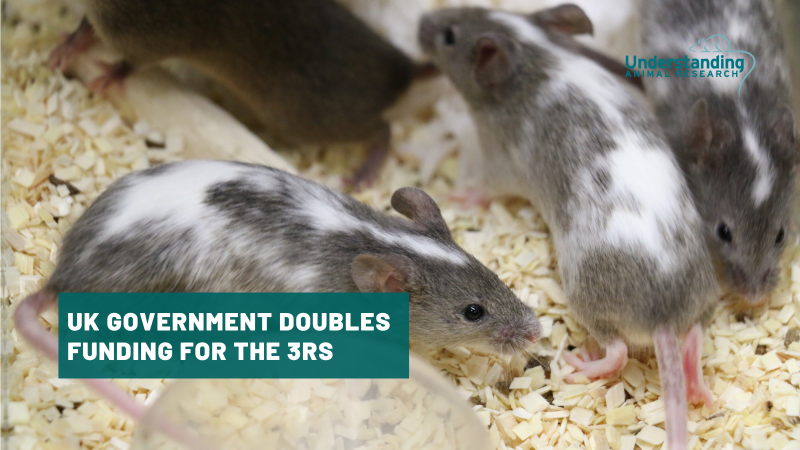
UK government doubles funding for the 3Rs
Subscribe to our newsletter.
Get the latest articles and news from Understanding Animal Research in your email inbox every month. For more information, please see our privacy policy .
Is it time to end biomedical experiments on monkeys?
Some researchers argue testing on primates is both unethical and irrelevant, but vaccine developers and others say it saves human lives — and the pandemic is their latest example, niranjana rajalakshmi • february 11, 2022.
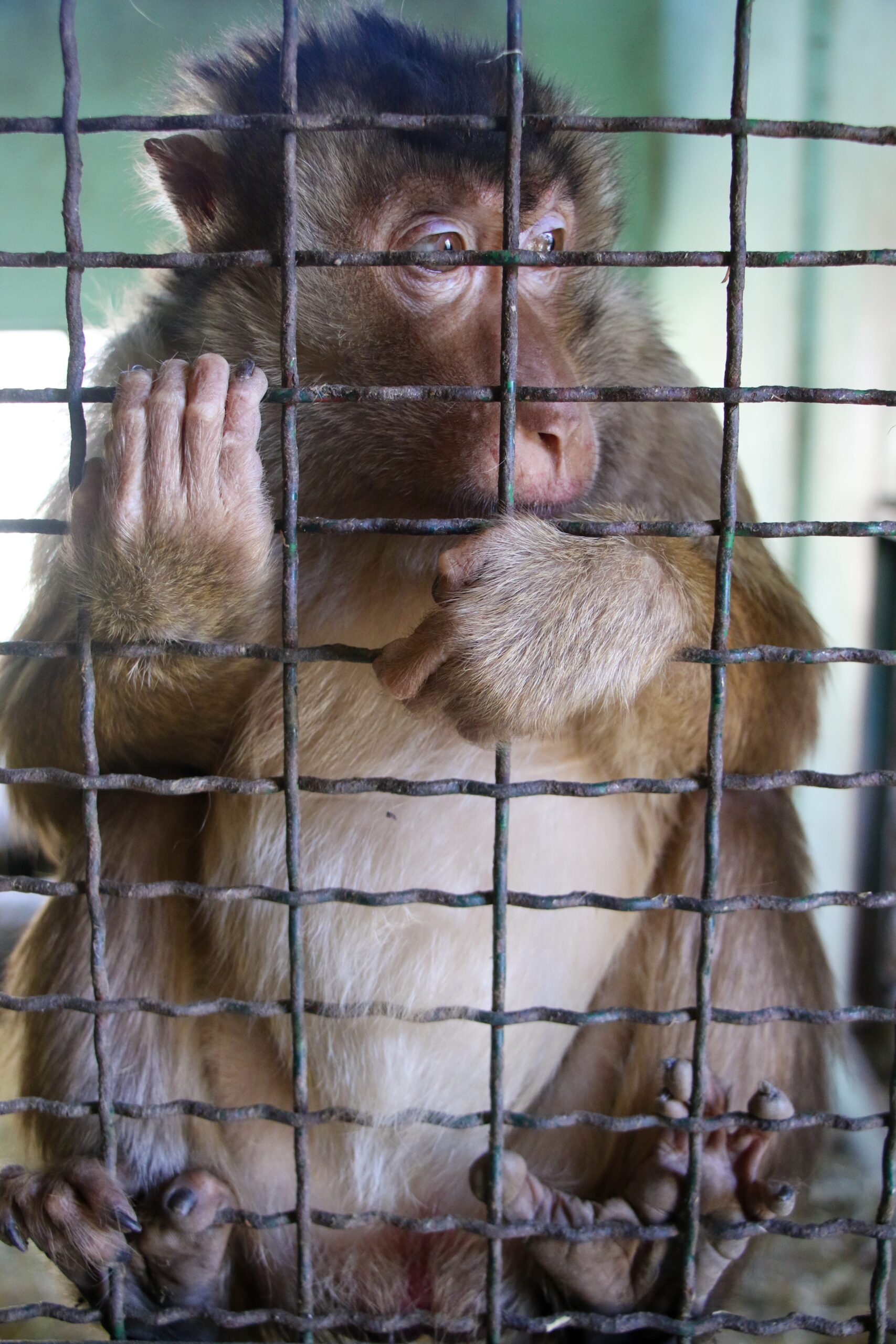
Confining monkeys in small cages instead of their natural forest environment changes the results of experiments, some researchers say. [Credit: Wikimedia Commons]
Chimpanzee justice, roni jacobson • november 19, 2012, the monkey in the mirror, mary beth griggs • january 19, 2011, the end of biomedical research on u.s. chimps may imperil their wild brethren, mark d. kaufman • february 17, 2017.
In 2015 , the National Institutes of Health banned experiments on chimps, our closest genetic relatives . But that hasn’t ended tests on other primates, despite never-ending criticism from both ethicists and some researchers.
This is the kind of research that Pfizer and Moderna relied on to get their COVID-19 vaccines to the market as soon as possible. Tests on rhesus macaques were important in speeding along the process, says Matthew R. Bailey , president of the Foundation For Biomedical Research . “To argue that primate research should not be conducted is itself unethical. It means you’ve delivered a death sentence to a lot of people who are depending on that research to save their lives,” he says.
But other animal experts, including several who formerly worked in research facilities, think it’s time to consider an outright ban on all monkey experiments. Noting that experimenting on chimps and other large apes is already banned in most countries , including the U.S., they argue that the monkeys in medical experiments suffer physically and psychologically. That raises not only ethical concerns but also scientific ones, since research monkeys living in a lab are more restricted in their movement than are monkeys that are free to roam.
In justifying the phase-out of chimp testing, NIH Director Dr. Frances Collins stated that “ new scientific methods and technologies have rendered their use in research largely unnecessary.” However, Collins has also said that continued testing on monkeys and other primates is vital to improving human health – even though chimps are actually much closer to humans than monkeys. We share almost 99% of our DNA with chimpanzees, compared to just 93% with rhesus monkeys .
“It’s deeply illogical,” asserts Lisa Jones-Engel , a former primate scientist at the University of Washington who is now a consultant to People for the Ethical Treatment of Animals (PETA). “It’s just about money. Monkeys are smaller and cheaper than chimpanzees. There are more of them available in the wild. It has nothing to do with scientific or ethical relevance.”
The cost associated with buying and maintaining chimps was one of the factors that influenced the NIH to ban chimpanzee testing, according to Dr. Larry Carbone , a former university veterinarian in San Francisco who is now an independent animal welfare consultant. “Chimps will cost you $100,000, and you spend $100 a day to house them”, he says. On the other hand, a rhesus monkey costs about $7,000, and just $15 to $20 per day to house and feed, Carbone adds.
Ultimately, the NIH concluded that “chimps are not useful enough” to justify the expense and the regulatory complications, since chimps are also an endangered species, unlike rhesus macaques, Carbone says.
No one knows exactly how many monkeys are used in research projects in the U.S. because the private companies that do much of the testing don’t have to disclose that information, according to Carbone. However, a 2019 federal report puts the total at more than 68,000. Even so, there was a monkey shortage when the COVID vaccine research was at its peak — one that still continues. “The shortfall of monkeys began in 2018 and their overall demand increased when the pandemic struck”, says Sheri Hild , an NIH program director for primate research.
The strongest case for continuing to use monkeys in experiments is for research on diseases like HIV and Ebola : diseases that monkeys are known carriers for . “The immune systems between humans and monkeys are so similar. That allows the testing of new treatment interventions,” says Caroline Pereira Bittencourt Passaes , who studies HIV-induced inflammation in rhesus macaques at the Pasteur Institute in Paris. “Giving HIV vaccines directly to humans would be a disaster,” she says.
But even in HIV research, monkeys are not an ideal experimental model for humans. For one thing, they tend to get less severe HIV infections than humans, making it more difficult to design appropriate drugs and vaccines.
Opponents of monkey testing, like Jones-Engels, extend this argument, claiming that “95% of drugs and treatments that work in animals, including monkeys, actually fail in humans.”. However, the NIH says the 95% failure rate applies to the entire drug discovery process, not to the animal tests that occur just before the human clinical trials.
COVID-19 vaccines are the latest reason most biomedical researchers continue to defend monkey experimentation. In a recent statement , a network of seven primate research centers argued that monkey tests were essential for getting fast approval for the Pfizer and Moderna mRNA vaccines, as did a group of European researchers . Both companies tested their vaccines in monkeys and found they could induce SARS-CoV-2 antibodies.
Monkey testing was important in the development of the COVID treatments and vaccines because the SARS-CoV-2 cellular receptor in humans is more similar to the one in monkeys than in other lab animals such as mice, according to the Pasteur Institute’s Passaes. “Monkeys have given a very valuable contribution to all these preclinical studies of drugs, monoclonal antibodies and of course, vaccines to fight COVID pandemic.”
But there was a dark side to some of that COVID-19 research, according to Jones-Engel. She says some monkeys used in the research were captured in forests in India and Bangladesh instead of being bred in captivity. “That is completely antithetical to best practices in the scientific community,” she says. “These monkeys were not bred for experiments. They were not specific-pathogen-free. How do you expect the results to be accurate?” For India’s COVAXIN vaccine, for example, authorities allowed researchers to capture 30 rhesus monkeys from the wild.
Primatologists point out that monkeys in cages are very different from their wild cousins, which inevitably affects experimental outcomes. “Some primates can walk for 50 kilometers a day, and they cannot do that in any lab. That’s a very big limitation,” says Constança Carvalho , a biologist at the University of Lisbon.
Wild monkeys not only range widely, they also engage in a variety of mind-stimulating behaviors, everything from gouging holes in tree trunks and cracking open nuts to being curious like humans . Restricting their movement and suppressing their natural instincts in the lab setting makes some scientists doubt the accuracy of research conducted on them.
“Housing animals with large brains in cramped cages has a powerful effect on their physiological and neurological systems”, says John P. Gluck , a retired primatologist at the University of New Mexico who now works on animal welfare issues. “Practically, primate models are not as good as we once thought and that has a lot to do with how we house them.” This could be relevant for vaccine studies, since at least one study has shown that separating young monkeys from their families and housing them indoors affects their immune system .
If monkeys are used at all for research, Carvalho thinks that they should be treated the same way as humans. “You need to have someone appointed to be in charge of defending the best interests of that particular animal, in the same way you have someone responsible for a child. And this is not what is done in labs.”
Operators of primate research labs, however, say critics are misrepresenting conditions at some facilities. At the California Primate Research Center , for example, most monkeys are housed outdoors with their families, says Kent Pinkerton , who is a scientist there. Outdoor monkeys “are happy with each other,” he adds, “and it’s not just one monkey with its offspring — it’s a colony.”
Opponents of monkey research cite the rise of alternative ways to model how humans may respond to experimental drugs, including 3D-printed human tissues and organoids and even organs on chips . Most of those tools, however, are still being developed and are not ready for widespread use yet.
And even when they are ready for prime time, alternative techniques like organs on chips can only be complementary tools to animal models, according to Hild, the NIH program director for primate research. “They definitely cannot be viewed as replacements for a whole organism,” she says. “They are just refinements that help in reducing animal usage in research.”
Even critics like Gluck acknowledge that ending primate testing overnight would slow down drug development — for the simple reason that the use of animals is such an ingrained tradition in biomedical research. “If all the primate research centers were emptied in the middle of a pandemic like this, it would have slowed down vaccine development, because that’s the way we think,” Gluck says, “even if it’s inferior thinking.”
About the Author
Niranjana Rajalakshmi
Niranjana Rajalakshmi is a veterinarian from South India. After a master’s in veterinary microbiology, she has combined her subject matter expertise with her fervor for storytelling and transitioned as a science journalist. From the three seasons of her city – summer, summerer, and summerest – she thinks moving to NYC will add at least one more season to her life and more flavor to her writing. Niranjana enjoys cooking, singing, and feeling nostalgic about her furry patients.
Experimenting on other species is fundamentally flawed because while they are like humans in their ability to feel pain and suffer, their physiology differs significantly from humans’. That’s why drugs that have passed animal tests with flying colors have sickened and even killed humans. Testing drugs on animals is as unnecessary as it is cruel. A prime example is the development of COVID vaccines. To expedite the process, the FDA and NIH allowed potential COVID vaccines to go to human clinical trials without first being tested extensively on animals. If they had required the usual years of animal tests, we still might not have an effective vaccine available.
YES YES YES! There are kinder and more accurate research methods available that take advantage of cutting-edge technology instead of cutting into animals.
It’s good to see this being written about, but the article needed some additional vetting. For instance: “But even in HIV research, monkeys are not an ideal experimental model for humans. For one thing, they tend to get less severe HIV infections than humans, making it more difficult to design appropriate drugs and vaccines.”
Monkeys are immune to HIV. Monkeys used in HIV research are infected with a different retrovirus called SIV (Simian Immunodeficiency Virus.) So, a different species being infected with a different virus is claimed to be HIV research.
I think that it is barbaric to experiment on any animals. How could any human experiment on any animal knowing the pain and suffering is going to be inflicted on that animal. This is something that needs to stop.
Yes let’s let’s end this!!!! Please! Hard to see these monkey suffering!
Yes shut down these labs. How can a human being do this. It’s barbaric. A person that does this has no soul or feelings.
A big thank you to the author of this article. How can we respect or believe the medical researchers for being so cruel to animals!! I agree their motivation is purely money and trying to win a prize. Leave the animals to live their lives free of human cruelty. People fighting for animal rights deserve a huge prize.
I wish someone would let people know that the monkey videos are staged and the monkeys were abused and most are dead, Kaka and Deim ones, multi pages fooling people thinking they are good people and treat Kaka like family, someone please make an article about what happen.
Leave a Reply
Your email address will not be published. Required fields are marked *
The Scienceline Newsletter
Sign up for regular updates.
- International edition
- Australia edition
- Europe edition

Plan for US ‘mini-city’ of 30,000 monkeys for medical research faces backlash
Georgia residents and animal rights activists unhappy at proposal to house long-tailed macaques in sprawling complex
A plan to establish the largest monkey-breeding facility in the US, which would allow 30,000 macaques to roam within outfitted warehouses in Georgia , is facing a furious backlash from animal rights groups and some local residents.
The sprawling, 200-acre complex would house an unusually large number of monkeys, which will then be sent out to universities and pharmaceutical companies for medical research. Over the next 20 years, the facility will assemble a mega-troop of about 30,000 long-tailed macaques, a species native to south-east Asia, in vast barn-like structures in Bainbridge, Georgia, which has a human population of just 14,000.
Safer Human Medicine, the company behind the new $396m simian metropolis, has said the monkeys will be kept in highly secured conditions, will not spread disease in the local area and will be fed fresh local produce.
“We all depend on these critical primates to save the lives of our loved ones and ourselves,” the company said in an open letter to residents that featured a mocked-up picture of monkeys joyfully cavorting with toys in a light-filled, apartment-like room.
But the plan faces fierce opposition, with some Bainbridge residents calling on local authorities to block the construction of the proposed primate manse. “They’re an invasive species and 30,000 of them, we’d just be overrun with monkeys,” claimed Ted Lee, a local man. “I don’t think anybody would want 30,000 monkeys next door,” added David Barber, who would live just 400ft from the new facility.
Animal rights groups are also calling for the plan to be scrapped, arguing that breeding primates for medical tests is cruel and provides little benefit in coming up with new treatments for humans due to differences between the species.
“This move not only further threatens the survival of these primates in the wild, it perpetuates a cycle that we should be breaking away from,” said Kathleen Conlee, vice-president of animal research issues for the Humane Society. “We urge local officials to reject the proposal to build this facility and the federal government to prioritize science that will ultimately save both human and animal lives.”
The vast majority of medical testing on animals involves rodents, with only about 1% requiring primates, but the practice of conducting experiments on humans’ closest relatives has long been controversial. The National Institutes of Health said in 2015 it would no longer support biomedical research upon chimpanzees and welfare groups have called for a broader ban alongside a switch to alternative methods, such as using new technology like artificial intelligence.
About 70,000 monkeys a year are still used across the US in tests for treatments to infectious diseases, ageing and neurological conditions such as Parkinson’s, with researchers warning that the US is running low on available primates for tests. Safer Human Medicine has said its planned monkey mini-city will help alleviate this, while also creating more than 260 local jobs to care for the new residents, which will not be taken from the wild. The monkeys weigh about 5 to 7lbs and, as their name suggests, have very long tails.
“There can often be a lot of misinformation surrounding animal research,” a spokeswoman for Safer Human Medicine said. “Our goal is to provide the Bainbridge community with the facts and accurate information about our purpose and the new facility’s operations. We still believe Bainbridge is the right place for this project and we plan to move ahead with the facility’s plans based on the approvals and support we received at the project’s outset.”
The facility initially secured tax breaks ahead of construction, although those have now been withdrawn ahead of a decision by local authorities over whether to allow the project. Safer Human Medicine has said it will press on with the monkey containment plan even without the tax breaks. Edward Reynolds, the mayor of Bainbridge, was contacted for comment.
- Medical research
Most viewed
An official website of the United States government
The .gov means it’s official. Federal government websites often end in .gov or .mil. Before sharing sensitive information, make sure you’re on a federal government site.
The site is secure. The https:// ensures that you are connecting to the official website and that any information you provide is encrypted and transmitted securely.
- Publications
- Account settings
Preview improvements coming to the PMC website in October 2024. Learn More or Try it out now .
- Advanced Search
- Journal List
- Pathog Immun
- v.2(3); 2017

The Critical Role of Nonhuman Primates in Medical Research
Henry friedman.
1 Duke University, Durham, North Carolina
2 Johns Hopkins, Baltimore, Maryland
Nancy Haigwood
3 Oregon Health & Science University, Portland, Oregon
4 Oregon National Primate Research Center, Portland, Oregon
William Newsome
5 Stanford University School of Medicine, Stanford, California
James S. Allan
6 Massachusetts General Hospital, Harvard Medical School, Boston, Massachusetts
Thaddeus G. Golos
7 Wisconsin National Primate Research Center, Madison, Wisconsin
Jeff H. Kordower
8 Rush Medical College, Chicago, Illinois
Robert E. Shade
9 Texas Biomedical Research Center, San Antonio, Texas
Michael E. Goldberg
10 Columbia University Medical Center, New York, New York
Matthew R. Bailey
11 Foundation for Biomedical Research, Washington, DC
Paul Bianchi
12 Rock Unlimited, New York, New York
The sponsors of this report endorse carefully regulated research with nonhuman primates. This research is essential to learning about the biology, treatment and prevention of diseases and conditions that cause human suffering.
Open in a separate window Research scientists are like detectives solving mysteries. We want to know why. More importantly, we want to save lives. NANCY HAIGWOOD, PHD, DIRECTOR OF THE OREGON NATIONAL PRIMATE RESEARCH CENTER
Research with nonhuman primates (NHPs) – monkeys for the most part – has led to critical health advances that have saved or improved millions of human lives. While NHPs account for just one-half of one percent of animals in current medical research, it is no exaggeration to say they are essential to our ability to find cures for cancer, AIDS, Alzheimer's, Parkinson's, obesity/diabetes, and dozens of other diseases that cause human suffering and death.
Research with monkeys is critical to increasing our knowledge of how the human brain works and its role in cognitive, motor, and mental illnesses such as Alzheimer's, Parkinson's, and depression . This research is also fundamental to understanding how to prevent and treat emerging infectious diseases like Zika and Ebola . NHP research is uncovering critical information about the most common and costly metabolic disorder in the U.S. – type 2 diabetes – as well as the obesity that leads to most cases.
Without NHP research, we lose our ability to learn better ways to prevent negative pregnancy outcomes, including miscarriage, stillbirth, and premature birth . This research is also helping scientists to uncover information that makes human organ transplants easier and more accessible, literally giving new life to those whose kidneys, hearts, and lungs are failing.
News headlines tout medical breakthroughs. Breakthrough sounds dramatic, and to someone hearing about how the virus that causes polio is being used to put an aggressive form of brain cancer into remission, it is indeed. But as the scientists involved in that cancer research—and research into every other area of medicine—will tell you, breakthroughs might be dramatic, but they are never sudden.
A well thought-out and structured process is behind virtually every medical breakthrough and the discovery process probably took decades or more. Every step in the process was essential to the next, from basic research to human clinical trials.

The NHPs used in medical research are mainly macaques, a type of monkey that includes 23 species mostly found in Africa. Both are relatively small NHPs. Macaques generally weigh between 8 and 26 pounds with baboons slightly larger depending on the exact species. Great apes, such as chimpanzees, are no longer used in U.S. medical research.
Monkeys are often involved at the later stage of the process— what is called translational or applied research. Here all of the knowledge accumulated earlier is applied to specific medical questions such as: Will this vaccine protect a pregnant woman (and her baby) from Zika infection? And is the vaccine likely to be safe?
But monkeys also play a vital role in basic science research that can come decades earlier. Basic NHP research in the 1970s helped scientists understand the inner workings of the basal ganglia, the part of the brain that coordinates movement. Those early findings led to the “breakthrough” 30 years later in which deep brain stimulation is used to reduce involuntary movements of Parkinson's disease. See more breakthroughs linked to NHP research in Appendix A.
Regardless of where it occurs in the scientific discovery process, research with monkeys is highly regulated (see Appendix B). Scientists use monkeys only when no other research model can provide the required information. While rodents are used extensively and are extremely helpful in answering many basic research questions, their usefulness is limited by differences from primates in their lack of sophisticated brain structures, less developed immune systems and motor skills, and differences in how their metabolism functions, among other traits.
To cite an example, rodent brains are very different from human brains. The rodent lacks the prefrontal cortex specialization that is found in monkeys and humans. This difference limits the applicability of rodent studies in relation to studies of injury in the human brain.
Current studies in monkeys are helping to find ways to help wounded soldiers and stroke victims regain their independence after losing limbs or the ability to control them.
NHPs are also the main animals that allow quick response and research into emerging viruses, like Zika. What scientists learn about Zika itself, as well as what they learn about the best use of monkeys in Zika studies, they will apply to studies of future emergent diseases. And with recent history as a guide (Zika, Ebola, Middle East Respiratory Syndrome [MERS], SARS, pandemic flu , etc.), we should expect more infectious disease outbreaks in the near future.
Focus on the Future: NHP Research Brings Hope to Millions of Patients
Boosting the body's natural defenses to kill cancer.
Open in a separate window This is the most promising therapy I've seen in my career. Period. HENRY S. FRIEDMAN, MD, INTERNATIONALLY RECOGNIZED NEURO-ONCOLOGIST, SPEAKING ABOUT USING MODIFIED POLIO VIRUS TO CURE BRAIN CANCER.
Modified poliovirus is being tested as a way to help the body's immune system see and destroy glioblastomas , the deadliest type of brain cancer. Glioblastomas can double in size every two weeks and can be deadly within months of diagnosis. The new treatment has led to complete remission in two glioblastoma patients and investigations are ongoing.
This type of research, called immunotherapy, uses the body's natural defense – the immune system – to destroy cancer cells. The harmless form of poliovirus is injected into glioblastoma tumors where it attaches to the cancer cells. The immune system recognizes the poliovirus as a dangerous invader and attacks – killing it and the cancer along with it.
It was 18 years from the earliest research until the first study in humans. Monkey research was essential in mapping out how to get the poliovirus through the brain and inside the cancerous tumors. The National Institutes of Health and the Food and Drug Administration also mandated testing the treatment first in monkeys to be sure the modified poliovirus would be harmless to humans.

Several years ago, this young woman was diagnosed with a deadly brain tumor the size of a tennis ball. When conventional treatment didn't work her doctors suggested a new treatment developed with primate research. She agreed. Today, she's cancer free.
PHOTO BY SHAWN ROCCO, FOR DUKE HEALTH NEWS AND COMMUNICATIONS
Doctors now are designing research to use this approach in treating many forms of cancer – including breast and prostate cancers – since the same receptor on the glioblastoma tumors that allows the poliovirus to attach itself also is found on virtually every cancerous tumor in humans.
HIV/AIDS: Looking for a Vaccine and a Cure
Open in a separate window The value of studying monkeys is scientifically proven. HIV is no longer an impending death sentence. KOEN VAN ROMPAY, DVM, PHD IS WORKING ON VACCINES AND ANTIVIRAL DRUGS TO TREAT OR PREVENT HIV INFECTION AND PEDIATRIC AIDS.
Scientists are looking for vaccines that can prevent HIV infection and treatments leading to a cure. Just 20 years ago medical advances changed the disease from a death sentence into a chronic, manageable disease. Drugs that keep the virus in check now give millions of HIV-infected people hope for a long and productive life.
Drug therapies effectively prevent HIV disease, but scientific advances in HIV are still needed. People with well-treated HIV still face more health problems than those without HIV [ 1 , 2 ]. They age faster, too. Doctors estimate people with HIV are at least 5 to 14 years older than their chronological age [ 3 , 4 ].
Monkeys are crucial to ongoing HIV research because of the combination of their unique biology among animals and their longevity, which is key in HIV studies that take from months to years to complete. Their similar biology helps scientists understand HIV disease, infection routes, the potential for vaccine-induced protection, and even an HIV cure.
An experiment reported in early 2016 looked at preventing mother-to-child HIV transmission [ 5 ]. After being exposed to simian-human immunodeficiency virus (SHIV), which is similar to HIV, infant monkeys with early stage infection were treated with human antibodies to block the infection. All of the monkeys in this experiment had no detectable virus in their blood or any of their tissues at the end of six months of observation.
In another experiment reported this year, rhesus macaques infected with another HIV-like virus were treated with standard anti-HIV medications plus an experimental drug that stimulates the immune system [ 6 ]. At the end of the study, 90 days after both medications were stopped, two monkeys showed no detectable virus in their bloodstream. This immune system stimulator was tested earlier in NHPs infected with chronic hepatitis B , leading to current research in humans with this potentially deadly infection. [ 7 ]
These studies hold promise for protecting babies from HIV infection and for finding a cure for those already infected, but much more research with monkeys will be needed to get there.
Improving Pregnancy Outcomes
Open in a separate window Primate research will help us learn new ways to prevent miscarriage, stillbirth, and premature babies. THADDEUS GOLOS, PHD, COMPARATIVE BIOSCIENCES, OBSTETRICS AND GYNECOLOGY PROFESSOR AT UNIVERSITY OF WISCONSIN WHO IS WORKING TO UNDERSTAND THE MECHANISMS LEADING TO NEGATIVE PREGNANCY OUTCOMES.
In human clinical studies, a fundamental question is, “Do the potential benefits of this treatment outweigh the potential risks?” This question takes on added meaning when the study is in pregnant women. Researchers must not only consider the risks and benefits to the pregnant woman, but also to her developing fetus and ultimately to the child [ 8 ].
But how do researchers even begin to define these risks and benefits before human clinical trials? The answer is research with monkeys, since their fetal and placental development is uniquely similar to humans.
Researchers are working with macaque monkeys to understand the impact of Zika, the latest virus to emerge as a global threat. Zika infection in pregnant women can cause microcephaly , a condition where the child is born with a small head due to abnormal brain development. It also appears to cause stillbirth, miscarriages, and fetal growth restriction . These problems all appear to be rooted in how the Zika virus affects the developing fetus and the placenta, which nourishes the baby in its mother's womb.
The Zika virus infects monkeys just as it does humans, and both experience the disease in the same way. Researchers can study pregnant monkeys much as an obstetrician follows a woman's pregnancy – they can take blood, monitor fetal development through ultrasounds, and collect amniotic fluid. They can then test vaccines and drugs with the hope of protecting the fetus. No other animal model allows for this entire spectrum of study and application of the findings to pregnant women.
Transplant Tolerance: The Next Big Step in Organ Transplant Success
More than 120,000 people in the U.S. are waiting for organ transplants and 22 of them die every day [ 9 ]. It is all the more tragic, then, when an organ transplant fails. This failure, or rejection, is caused when the recipient's immune system sees the new organ as “foreign” and attacks it.
To reduce the chance of organ rejection, transplant patients receive drugs to suppress their immune system. But the drugs come with a risk of toxicity and increase the risk of other problems, including development of cancers and infections resulting from a weakened immune system.
Research with monkeys is focused on achieving transplant tolerance — where the body's immune system does not see the new organ as foreign, thus eliminating the need for immunosuppressive drugs. While scientists have already made great strides in kidney transplant tolerance, they understand that tolerance is organ specific, so knowledge about the kidney may not transfer to the heart, lungs, liver, pancreas/pancreatic islets, or other types of transplants.
Transplant tolerance also differs by species. In other words, what works in a mouse may not work in a pig, and what works in a pig may not work in a monkey. Scientists learned about kidney transplant tolerance by starting with mice and then working up through swine and eventually into monkeys and humans. The same process is underway now for many other types of transplants.
Mapping Out Brain Function
Open in a separate window Understanding all brain diseases relies on us understanding how the healthy brain works during normal functioning. STEPHEN LISBERGER, PHD, NEUROBIOLOGIST STUDYING HOW OUR BRAINS LEARN MOTOR SKILLS AND HOW WE USE WHAT WE SEE TO GUIDE HOW ME MOVE.
How does the brain work? No question could be more important for understanding human behavior and mental health, and for acquiring new information about the triggers in the brain that cause psychiatric, movement and other neurological diseases . The U.S. National Institutes of Health-supported BRAIN Initiative has developed a plan for improving our knowledge in these areas and research with monkeys and other species is critical to its success [ 10 ].
Scientists are mapping the activity of the billions of neurons deep inside the brain – the special cells that transmit the signals that drive thinking, mood, movement, and much more. By tracking neuron activity in monkeys while they are performing new tasks, scientists can actually see what parts of the brain are involved in sending the signals that take in, process, and store the newly acquired information.
What is unique to – or at least greatly enhanced by – the use of monkeys in this research is the range of cognitive behaviors that can be studied, the amount and precision of the data that can be collected, and the relevance of that data to human behavior and mental activity.
Seeing what is happening in a healthy monkey brain helps scientists understand what has gone wrong when a human brain is no longer working as it should. This type of research has relevance to Parkinson's disease and other movement disorders, all forms of dementia , including Alzheimer's, and behavioral and psychiatric problems from alcoholism and attention-deficit disorder to bipolar disorder and autism .
Alzheimer's and other dementias cost the U.S. $236 billion each year [ 11 ].
Turning Science Fiction into Science Fact: Brain-Machine Interfaces
You see someone walking haltingly, dragging one leg behind him, or sitting with one arm draped listlessly on a table and immediately know he has had a stroke. Scientists learned long ago that it's not the muscles that are at fault; it's the nerve impulses inside the brain that have been affected.
A combination of scientific breakthroughs in neuroscience, computer processing and robotics has led to development of “brain-machine interfaces” – devices that allow humans to interact with their environment with prosthetic arms when they have lost the use of their own. Brain-machine interfaces translate signals in the brain into directions to move prosthetic arms.
Brain-machine interfaces can help paralyzed veterans interact with their environment.
This area of research shows enormous promise for humans who are paralyzed, such as injured veterans, or those with brain damage and paralysis due to stroke. As NHPs and humans have similarly developed brains and movements, experiments in monkeys have been vital to moving this field forward both conceptually and technically.
Developing Vaccines for Babies and Adults
NHPs are essential to vaccine research. Among research animals, they alone can reproduce the entire biological process of the infections being studied. They allow researchers to monitor for information that is vital in understanding human infectious diseases – such as how a virus or bacterium reproduces inside the body, what symptoms it causes, and how the body's immune system responds to attack the invader.
Among the viruses currently in vaccine research trials is respiratory syncytial virus , or RSV – the most common cause of lower respiratory tract infections in U.S. infants and small children [ 12 ]. There is no treatment for RSV, [ 13 ] which hospitalizes nearly 60,000 U.S. children under age 5 every year and sends 2.1 million more to the doctor [ 14 ]. Vaccine research with monkeys is evaluating the safety of potential RSV vaccines in infants.
Other viruses under study include Ebola and Marburg , which can cause extreme bleeding that leads to death; the mosquito-borne Dengue and Zika viruses, capable of causing massive epidemics; and MERS plus the dangerous H5 and H7 bird flu strains, all of which have very high death rates.
Baboons and Humans: Unique Connections for Blood Pressure Control
Open in a separate window Monkeys have certain traits and characteristics that make them essential and irreplaceable in medical research. They're the “bridge to the clinic.” JEFF KORDOWER, PHD, NEUROSCIENTIST EXAMINING HOW DISEASES LIKE PARKINSON'S AND ALZHEIMER'S AFFECT THE BRAIN TO CAUSE THEIR SYMPTOMS.
Lowering blood pressure is vitally important to individuals and our society. High blood pressure is a major factor in heart disease – the number one killer in the U.S. and the world [ 15 ]. And it's not just heart disease; high blood pressure leads to stroke, kidney damage, memory problems , and many other illnesses [ 16 ].
Decades ago, researchers made a breakthrough discovery that long-term blood pressure regulation is nearly identical in humans, baboons, and other NHPs. In fact, adult NHPs frequently develop hypertension similar to humans. Subsequent studies with monkeys have helped billions around the world lower blood pressure and reduce their risk of deadly complications.
Scientists recently discovered that baboons share another unique trait with humans – a characteristic in their red blood cells that can lead to salt-sensitivity and an inherited form of hypertension that is particularly difficult to treat. Current research is looking for new targets to control this type of high blood pressure.
Research with monkeys provides another key benefit – lifespan. High blood pressure becomes more common as we age and researchers are able to work with older baboons to gain essential information about the mechanisms driving this age-based increase – vital to the health of our aging population.
Diabetes and Obesity: Connected in NHPs Just as in Humans
Open in a separate window The top 3 benefits of our human/monkey research partnerships? Safety. Efficacy. And greater predictability. MICHAEL GOLDBERG, MD, PROFESSOR OF BRAIN AND BEHAVIOR DEPARTMENTS AT COLUMBIA UNIVERSITY COLLEGE OF PHYSICIANS AND SURGEONS, WHO STUDIES HOW THE BRAIN PROCESSES WHAT THE EYES SEE.
Type 2 diabetes develops in monkeys just as it does in humans, even following the same age patterns, that is to say, more disease as we get older (one-fourth of U.S. seniors have diabetes) [ 17 ]. NHPs with diabetes even develop the same complications that are common in humans: eye disease, kidney disease, nerve damage and pain, and blood vessel disease, among others [ 18 ].
NHPs and humans have very similar systems that regulate blood sugar. For example, the structure and function of the group of cells in the monkey pancreas (called islets) that produce insulin are very similar to human islets. The islets in mice, rats, pigs, and other animals share some similarities with humans, but there are important differences, making monkeys a critical model for developing treatment and prevention methods, and for testing new therapies for people with diabetes.
Nonhuman primates are the ideal model for testing new therapies for people with diabetes, including the artificial pancreas, drugs and devices.
Type 2 diabetes and the U.S. obesity epidemic are linked – obesity is a contributing factor to the condition. More than a third of U.S. adults are obese and another third are overweight [ 19 ]. As with diabetes research, monkeys provide a critically important study model for human obesity. Monkeys that are fed a diet similar to the typical American diet respond like humans, gaining weight and later progressing to type 2 diabetes.
Researchers are examining the role of gastrointestinal proteins called glucagon-like peptides in the development of obesity in bonnet macaques. Bonnet macaques are unique among NHPs because they have a strong genetic predisposition to obesity. This research is looking for obesity treatments that will be as effective as invasive bariatric surgery, but with far less risk.
In conclusion, because NHPs are the most readily available models with the greatest psychological and genetic similarities to humans, they play an indispensable role in the process of medical research and development.
Acknowledgments
The authors wish to acknowledge the following experts who participated in conference calls that served as the basis for the paper's content and/or who provided comments during drafting: David Beversdorf, Jeffrey I. Cohen, Karl Deisseroth, Mahlon DeLong, Lynn W. Enquist, David Favre, Stephen Lisberger, Tim Moran, John Morrison, Alvin C. Powers, D. Eugene Redmond Jr., Koen Van Rompay, Robert E. Shade, Daniel Scoles, and Lary C. Walker. The authors also wish to thank David Wojdyla of AND VERTISING, Inc. for his contributions to the design and copy of the original report.
Appendix A: Partial List of Scientific Advances Linked to Research in Nonhuman Primates
- Components of blood and plasma discovered.
- Ability to diagnose and treat typhoid fever.
- Modern anesthesia.
- Mumps virus discovered.
- Treatment of rheumatoid arthritis.
- Discovery of the Rh factor, blood-typing knowledge critical for safe blood transfusions.
- Development of polio vaccine.
- Development of antipsychotic medication chlorpromazine and its tranquilizing derivatives.
- Cancer chemotherapy.
- Development of yellow fever vaccine.
- Mapping of the heart's connections to arteries.
- Development of German measles vaccine.
- Therapeutic use of cortisone for reducing inflammation and allergy symptoms.
- Corneal transplants.
- Development of treatment and prevention of radiation sickness.
- Development of measles, mumps, and rubella (MMR) vaccine.
- Discovery of the biochemical cause of depression.
- Transmissibility of human prion diseases, such as Creutzfeldt-Jacob disease, discovered.
Open in a separate window All of our ability to address diseases in applied research comes from efforts in basic science research. WILLIAM NEWSOME, PHD, NEUROBIOLOGIST STUDYING HOW OUR BRAINS TRANSLATE WHAT WE SEE INTO MOVEMENT.
- Treatment of leprosy.
- Procedures to restore blood supply in the brain.
- Interaction between tumor viruses and genetic material.
- Understanding of slow viruses, which linger in the nervous system.
- Understanding of the inner workings of the basal ganglia, the part of the brain that coordinates movement.
- Discovery of mechanisms of opiate withdrawal and the anti-withdrawal effects of clonidine.
- Development of cyclosporine and other anti-rejection drugs helpful for organ transplants.
- Processing of visual information by the brain.
- Identification of physiological and psychological co-factors in depression, anxiety and phobias.
- Treatment of malnutrition caused by food aversion following chemotherapy.
- Treatment of congenital cataracts and “lazy eye” in children.
- First animal model for research on Parkinson's disease, enabling doctors to more accurately research human Parkinson's disease.
- Heart and lung transplant to treat cardiopulmonary hypertension.
- First hepatitis B vaccine.
- Development of rhesus monkey model for HIV/AIDS.
- Addition of taurine to infant formulas. Taurine is necessary for normal eye development.
- First treatment of naturally diabetic NHPs with a hormone-like insulin stimulus that is now in wide use both for diabetes and obesity treatment (GLP-1 agonist).
Open in a separate window Without continued nonhuman primate research, many important translational discoveries in the field of transplantation will never happen. These preclinical investigations are critical to the many patients who are currently waiting for transplantation and the many others who are facing the possibility of organ rejection after transplantation. JAMES S. ALLAN, MD, THORACIC SURGEON AND CO-DIRECTOR OF THE CARDIOTHORACIC TRANSPLANTATION LABORATORY AT MASSACHUSETTS GENERAL HOSPITAL.
- Estrogen discovered to control an enzyme key to making serotonin, the brain chemical that regulates mood. Represents first step to providing effective medications for depression at the end of the menstrual cycle, and postpartum and postmenopausal depression.
- Demonstration of the effectiveness of early administrationof AZT to prevent or treat HIV infection. Thanks to this, HIV-infected mothers can give birth to HIV-free babies.
- Demonstration in monkeys of the high efficacy of the HIV drug tenofovir to prevent or treat infection.
- Lead toxicity studies help U.S. fight childhood lead exposure.
- Ongoing development of a one-dose transplant drug to prevent organ rejection.
- First controlled study to reveal that even moderate levels of alcohol are dangerous in pregnancy.
- Breakthroughs in understanding the mechanisms of puberty and disorders of puberty.
- Primate embryonic stem cells studied extensively for the first time, advancing efforts to better understand reproduction and genetic disorders.
- Control of intimal hyperplasia, a complication of coronary bypass surgery.
- Parent to child lung transplants for cystic fibrosis.
- NHPs shown to naturally develop diabetes, which is the same disease as in humans, thus opening the path to research for new treatments.
- Naturally regenerative mechanism discovered in the mature NHP brain, spurring new research toward curing Alzheimer's and other degenerative brain disorders.
- Development of anthrax vaccine.
- Development of life-saving medications for lupus.
- Gene that boosts dopamine production and strengthens brain cells used to successfully treat monkeys showing symptoms of Parkinson's disease.
- Monkey model developed to study the effects of malaria in pregnant women and their off-spring.
- NHPs are prime model for development of HIV treatments and potential vaccines.
- Insulin-treated diabetic patients live longer, fuller lives.
- The most common and debilitating complications of diabetes can now be studied in NHPs.
- High blood pressure is treated to prevent heart attack, stroke, and kidney failure.
- Patients can receive hip replacements and are no longer reliant on wheelchairs.
- People with degenerative eye diseases are able to see more clearly.
- Better medications improve lives of people with severe depression, bipolar disorder, and other psychiatric illnesses.
- Better pre- and postnatal care protects children.
- Earlier diagnoses and better treatments help those with polycystic ovary syndrome, endome triosis, and breast cancer.
- Improved treatments help more men survive prostate cancer.
- Secondhand smoke shown to affect prenatal, neonatal and child lung development, cognitive function and brain development.
- Exposure to wildfire smoke adversely affects development of the immune system.
- Better understanding of the effects of BPA, a chemical found in plastic, on prenatal development improves health of children and adults.
Adapted with permission from: Primate Info Net, National Primate Research Center, University of Wisconsin – Madison. At http://pin.primate.wisc.edu/research/discoveries.html .
Appendix B: Regulating the Use of Nonhuman Primates in Research
Two federal agencies oversee how animals are used in medical research.
For research funded by any Public Health Service entity , such as the National Institutes of Health (NIH) or the National Science Foundation, the NIH:
- → Establishes Public Health Service Policy on Humane Care and Use of Laboratory Animals . [ 20 ]
- → Mandates use of the Guide for the Care and Use of Laboratory Animals , which is issued by the National Academy of Science Institute for Laboratory Animal Research . This guide addresses day-to-day aspects of caring for laboratory animals.[ 21 ]
- → Mandates that every institution appoints an Institutional Animal Care and Use Committee (see below).
The USDA's Animal Plant and Health Inspection Service enforces the Animal Welfare Act with unannounced compliance inspections of all regulated entities using animals in research, testing or teaching at least yearly [ 22 ].

Lab Animals by Species
The number of nonhuman primates used in research is less than 1%. But its impact on human health is enormous.
The Association for the Assessment and Accreditation of Laboratory Animal Care International is an independent non-government accrediting organization. While voluntary, this accreditation includes broader requirements than the regulations. This demonstrates research facilities want to go “above and beyond” in the care of animals [ 23 ].
Open in a separate window Today's researchers monitor not just the nutritional and environmental needs of NHPs but psychological needs, too. ROBERT SHADE, PHD, SCIENTIST EMERITUS AT SOUTHWEST NATIONAL PRIMATE RESEARCH CENTER
Every institution involved in nonhuman primate research is required by the Animal Welfare Act as well as Public Health Service policy to appoint and empower an Institutional Animal Care and Use Committee [ 24 ] that reviews and approves the research. Scientists must justify their use of primates and also explain why alternative forms of research (for example, studying cells or using computer simulations) are not able to achieve their scientific goals. They must also confirm that their research does not unnecessarily duplicate previous research [ 25 ].
Funding/Potential Conflict of Interest
This article was originally published as a report by the Foundation for Biomedical Research. It was sponsored by the following organizations that support carefully regulated research with nonhuman primates: American Academy of Neurology, American College of Neuropsychopharmacology, American Physiological Society, American Society for Microbiology, American Transplant Foundation, Endocrine Society, Federation of American Societies for Experimental Biology, and Society for Neuroscience. Wisconsin National Primate Research Center is funded by NIH grant P51OD011106. The Oregon National Primate Research Center is funded by NIH grant P51OD011092.
NOTE: WEBLINKS ACCESSED MAY-JUNE 2016
- Election 2024
- Entertainment
- Newsletters
- Photography
- Personal Finance
- AP Investigations
- AP Buyline Personal Finance
- AP Buyline Shopping
- Press Releases
- Israel-Hamas War
- Russia-Ukraine War
- Global elections
- Asia Pacific
- Latin America
- Middle East
- Election Results
- Delegate Tracker
- AP & Elections
- Auto Racing
- 2024 Paris Olympic Games
- Movie reviews
- Book reviews
- Personal finance
- Financial Markets
- Business Highlights
- Financial wellness
- Artificial Intelligence
- Social Media
Research monkey shortage undermines US readiness, panel says

FILE - River, left, and Timon, both rhesus macaques who were previously used in medical research, sit in an outdoor enclosure at Primates Inc., in Westfield, Wis., on May 13, 2019. The sanctuary is a 17-acre rural compound where research animals can live their remaining years when their studies are done. A report released on Thursday, May 4, 2023, says a shortage of monkeys available for medical research undermines U.S. readiness to respond to public health emergencies. (AP Photo/Carrie Antlfinger, FILE)
- Copy Link copied
There’s a shortage of monkeys available for medical research and the U.S. should expand its breeding programs rather than rely on international suppliers to solve it, an influential scientific advisory panel said Thursday.
Studies using nonhuman primates, especially monkeys, have been critical to lifesaving medical advances – including creating vaccines against COVID-19 – because of their similarities to people. The U.S. funds colonies at national primate centers but supplies were tight and more animals were regularly imported even before the pandemic.
Then China, once a leading supplier, ended exports of research monkeys in 2020, as scientists everywhere needed more for coronavirus studies. And last fall, the U.S. filed charges to stop a Cambodian smuggling ring accused of shipping endangered wild monkeys in place of those bred for research, further constraining supplies.
Thursday’s report examined only research funded by the National Institutes of Health, deemed key to responding to public health emergencies — not drug company or other publicly or privately funded research with monkeys.
The nation’s preparedness is undermined by having to depend on imports of these animals, which are especially important for infectious disease research and neuroscience, said a panel of the National Academies of Sciences, Engineering and Medicine. Highlighting that vulnerability, the U.S. experienced a 20% drop in imports of one species, cynomolgus macaques, when China suddenly stopped shipping.
The panel also called for more development of alternatives to monkey testing — and in the meantime urged better scientific collaboration to make the best use of each research animal.
“If the U.S. is to produce high-impact biomedical research and have a research infrastructure capable of responding to the next public health crisis, now is the time to strengthen the systems we need for nonhuman primate research,” said committee chairman Dr. Kenneth Ramos of Texas A&M University.
Use of animals in biomedical research, especially nonhuman primates, is controversial. Under pressure, the NIH already retired chimpanzees, humans’ closest relatives, from invasive research but has maintained there’s still need for monkeys. Nonhuman primates represent 0.5% of all the animals used in biomedical research in the U.S., the report said.
In a survey of NIH-supported researchers, the National Academies panel found 64% reported challenges in getting nonhuman primates required for their work, including increased wait times and cost. In 2021, the National Primate Research Centers had such a shortage of monkeys never used in previous studies that it couldn’t meet two-thirds of researcher requests, the report said.
The Associated Press Health and Science Department receives support from the Howard Hughes Medical Institute’s Science and Educational Media Group. The AP is solely responsible for all content.
Thank you for visiting nature.com. You are using a browser version with limited support for CSS. To obtain the best experience, we recommend you use a more up to date browser (or turn off compatibility mode in Internet Explorer). In the meantime, to ensure continued support, we are displaying the site without styles and JavaScript.
- View all journals
- Explore content
- About the journal
- Publish with us
- Sign up for alerts
- NEWS EXPLAINER
- 16 November 2023
- Clarification 17 November 2023
How wild monkeys ‘laundered’ for science could undermine research
- Gemma Conroy
You can also search for this author in PubMed Google Scholar
In 2019, immunologist Jonah Sacha purchased a shipment of monkeys for his research into infectious diseases. But while conducting preliminary chest X-rays, Sacha found one monkey that stood out for all the wrong reasons: it had latent tuberculosis (TB), meaning it was carrying the bacterium that causes TB.
Access options
Access Nature and 54 other Nature Portfolio journals
Get Nature+, our best-value online-access subscription
24,99 € / 30 days
cancel any time
Subscribe to this journal
Receive 51 print issues and online access
185,98 € per year
only 3,65 € per issue
Rent or buy this article
Prices vary by article type
Prices may be subject to local taxes which are calculated during checkout
Nature 623 , 672-673 (2023)
doi: https://doi.org/10.1038/d41586-023-03533-1
Updates & Corrections
Clarification 17 November 2023 : The text has been modified to make clearer that Jonah Sacha had purchased research animals that were captive-bred.
Warne, R. K., Moloney, G. K. & Chaber, A-L. One Health 16 , 100520 (2023).
Article PubMed Google Scholar
Download references
Reprints and permissions
Related Articles

NIH to retire all research chimpanzees
- Medical research

Video: Cancer-busting vaccines
Outline 27 MAR 24

Cancer-vaccine trials give reasons for optimism

How does a cancer vaccine work?

Deadly diseases and inflatable suits: how I found my niche in virology research
Spotlight 17 APR 24

Obesity drugs aren’t always forever. What happens when you quit?
News Feature 16 APR 24

The rise of eco-anxiety: scientists wake up to the mental-health toll of climate change
News Feature 10 APR 24

AI’s keen diagnostic eye
Outlook 18 APR 24

Refining the impact of genetic evidence on clinical success
Analysis 17 APR 24

AI traces mysterious metastatic cancers to their source
News 17 APR 24
Postdoctoral Position
We are seeking highly motivated and skilled candidates for postdoctoral fellow positions
Boston, Massachusetts (US)
Boston Children's Hospital (BCH)
Qiushi Chair Professor
Distinguished scholars with notable achievements and extensive international influence.
Hangzhou, Zhejiang, China
Zhejiang University
ZJU 100 Young Professor
Promising young scholars who can independently establish and develop a research direction.
Head of the Thrust of Robotics and Autonomous Systems
Reporting to the Dean of Systems Hub, the Head of ROAS is an executive assuming overall responsibility for the academic, student, human resources...
Guangzhou, Guangdong, China
The Hong Kong University of Science and Technology (Guangzhou)
Head of Biology, Bio-island
Head of Biology to lead the discovery biology group.
BeiGene Ltd.
Sign up for the Nature Briefing newsletter — what matters in science, free to your inbox daily.
Quick links
- Explore articles by subject
- Guide to authors
- Editorial policies
- Share full article

Future Vaccines Depend on Test Subjects in Short Supply: Monkeys
Veterinary techs distribute food every morning to more than 5,000 monkeys at the Tulane University National Primate Research Center outside New Orleans. Credit...
Supported by
By Sui-Lee Wee
Photographs and Video by Bryan Tarnowski
- Feb. 23, 2021
Mark Lewis was desperate to find monkeys. Millions of human lives, all over the world, were at stake.
Mr. Lewis, the chief executive of Bioqual, was responsible for providing lab monkeys to pharmaceutical companies like Moderna and Johnson & Johnson , which needed the animals to develop their Covid-19 vaccines. But as the coronavirus swept across the United States last year, there were few of the specially bred monkeys to be found anywhere in the world.
Unable to furnish scientists with monkeys, which can cost more than $10,000 each, about a dozen companies were left scrambling for research animals at the height of the pandemic.
“We lost work because we couldn’t supply the animals in the time frame,” Mr. Lewis said.
The world needs monkeys, whose DNA closely resembles that of humans, to develop Covid-19 vaccines. But a global shortage, resulting from the unexpected demand caused by the pandemic, has been exacerbated by a recent ban on the sale of wildlife from China, the leading supplier of the lab animals.
The latest shortage has revived talk about creating a strategic monkey reserve in the United States, an emergency stockpile similar to those maintained by the government for oil and grain.

As new variants of the coronavirus threaten to make the current batch of vaccines obsolete, scientists are racing to find new sources of monkeys, and the United States is reassessing its reliance on China, a rival with its own biotech ambitions.
The pandemic has underscored how much China controls the supply of lifesaving goods, including masks and drugs , that the United States needs in a crisis.
American scientists have searched private and government-funded facilities in Southeast Asia as well as Mauritius, a tiny island nation off southeast Africa, for stocks of their preferred test subjects, rhesus macaques and cynomolgus macaques, also known as long-tailed macaques.
But no country can make up for what China previously supplied. Before the pandemic, China provided over 60 percent of the 33,818 primates, mostly cynomolgus macaques, imported into the United States in 2019, according to analyst estimates based on data from the Centers for Disease Control and Prevention.
The United States has as many 25,000 lab monkeys — predominantly pink-faced rhesus macaques — at its seven primate centers. About 600 to 800 of those animals have been subject to coronavirus research since the pandemic began.

Scientists say monkeys are the ideal specimens for researching coronavirus vaccines before they are tested on humans. The primates share more than 90 percent of our DNA, and their similar biology means they can be tested with nasal swabs and have their lungs scanned. Scientists say it is almost impossible to find a substitute to test Covid-19 vaccines in, although drugs such as dexamethasone , the steroid that was used to treat President Donald J. Trump, have been tested in hamsters.
The United States once relied on India to supply rhesus macaques. But in 1978, India halted its exports after the Indian press reported that the monkeys were being used in military testing in the United States. Pharmaceutical companies searched for an alternative.
Eventually, they landed on China.
The pandemic upset what had been a decades-long relationship between American scientists and Chinese suppliers.
“When the China market closed down, that just forced everyone to go to a smaller number of available animals,” said Mr. Lewis.
For years, several airlines, including the major American carriers, have also refused to transport animals used in medical research because of opposition from animal rights activists.
In the meantime, the price for a cynomolgus monkey has more than doubled from a year ago to well over $10,000, Mr. Lewis said. Scientists researching cures for other diseases, including Alzheimer’s and AIDS, say their work has been delayed as priority for the animals goes to coronavirus researchers.
The shortage has led a growing number of American scientists to call on the government to ensure a constant supply of the animals.
Skip Bohm, the associate director and chief veterinary medical officer at the Tulane National Primate Research Center outside New Orleans, said the discussion for a strategic monkey reserve started about 10 years ago among the directors of the national primate research centers. But a stockpile was never created because of the amount of money and time needed to build a breeding program.
“Our idea was sort of like the strategic oil reserve, in that there’s lots and lots of fuel somewhere that is only tapped in an emergency,” Professor Bohm said.

But as new variants of the virus are discovered, potentially restarting the race for a vaccine, scientists say the government needs to take action on the stockpile immediately.
“The strategic monkey reserve is exactly what we needed to deal with Covid, and we just didn’t have it,” said Keith Reeves, a principal investigator at the Center for Virology and Vaccine Research at Harvard Medical School.
But a robust strategic reserve might still be unable to meet the skyrocketing demand for lab animals, as researchers in China have learned. Even with a government-controlled stockpile of about 45,000 monkeys, researchers in China say they are also grappling with a shortage.
Researchers often collect hundreds of specimens from a single monkey, whose tissues can be frozen for years and studied over long periods. The scientists say they make the most of each animal, but monkeys infected with Covid-19 cannot be returned to live among other healthy animals and must be eventually euthanized.
In January, Shen Weiguo, general manager of the Shanghai Technology Venture Capital Group, told local legislators that three large biomedical companies in the city were short 2,750 research monkeys last year, according to a report in the state news media. The shortfall is expected to grow 15 percent annually over the next five years, Mr. Shen said.
Hubei Topgene Biotechnology raises monkeys for its own research and for export. The United States was previously its top export destination, but the company currently does not have enough animals to conduct its own experiments, said Yan Shuo, a sales manager.
“Now, it’s not even a matter of money,” Mr. Yan said. “We don’t even have monkeys to sell abroad.”
The United States maintains seven national primate research centers, where the animals, when not undergoing research, live in colonies with access to the outdoors and enrichment activities. The facilities are affiliated with research universities and funded by the National Institutes of Health. Animal rights activists have long accused the centers of abuse, including separating babies from their mothers.
Matthew R. Bailey, president of the National Association for Biomedical Research, said he was preparing to raise the monkey shortage with the Biden administration. He said China’s decision to halt exports at the beginning of the pandemic was “likely a prudent emergency move,” but he suggested that China could restart exports given what is now known about how the virus is spread.
China’s Foreign Ministry said the ban was not targeted at specific species or countries.
“ Once the international situation improves and the conditions for imports and exports are met,” the ministry said in a statement, “China will actively consider resuming import and export approval and other related work.”
Experts said the United States had to bear some responsibility for not having enough research monkeys.
The budgets at the national primate centers have either stayed flat or fallen for well over a decade. Koen Van Rompay, an infectious diseases expert at the California National Primate Research Center, said the federal government asked the center to expand its breeding colonies about 10 years ago but did not give it increased funding, so it downsized its colony instead.
“What we did in a number of cases was that we gave our females birth control,” Dr. Van Rompay said. “So there would be fewer babies born in the spring.”
At a panel organized by the National Institutes of Health in December 2018, scientists discussed the challenges facing America’s primate supply. There was an awareness then that “if China decides to turn off the spigot, we will be in deep trouble,” said Jeffrey Roberts, the associate director of the California National Primate Research Center.
Attendees “agreed that the need to domestically breed cynomolgus macaques is essential and could jeopardize biomedical research in the United States as a whole, if not met,” according to a report of the meeting. “They emphasized that it may already be too late to address this need but will certainly be too late within a few months.”
Amber Wang and Elsie Chen contributed research.
More about Sui-Lee Wee
Advertisement
- Newsletters
Site search
- Israel-Hamas war
- 2024 election
- Solar eclipse
- Supreme Court
- All explainers
- Future Perfect
Filed under:
- Neuroscience
What can caged lab monkeys tell us about free human beings?
Where biomedicine gets it wrong about primate research.
Share this story
- Share this on Facebook
- Share this on Twitter
- Share this on Reddit
- Share All sharing options
Share All sharing options for: What can caged lab monkeys tell us about free human beings?
/cdn.vox-cdn.com/uploads/chorus_image/image/72497007/992170816.0.jpg)
A friend says they can always tell when you’re hungover. The way you close the cage latch. With so little to do, their attention can focus on those subtle differences in movement: the way it turns, whether it drops all or part of the way.
After easing the latch back open, the monkey climbs down to the concrete floor, past the rolling service station with its cotton swabs, boxes, bottles, and syringes.
Out in the hallway, two caretakers see him crouched against the cinderblock wall, hands pressed against the cream-colored paint, shoulders pulled up, head turned sideways and facing down the corridor, eyes toward them.
Over the past couple of years, experimentation on non-human primates has had a run of bad publicity. In 2020, media attention focused on a federal laboratory that studied the neurobiology of anxiety by scaring monkeys with toy snakes . In November, the US Justice Department indicted members of an alleged “primate smuggling ring” for trafficking and selling wild long-tailed macaques , an endangered species, to biomedical researchers in the US.
Around the same time, attention turned to the Livingstone Lab at Harvard University, where researchers sewed baby macaques’ eyelids shut to investigate how visual deprivation affects brain development. The controversy landed in Science magazine , where scientists debated the ethics of blinding monkeys. I was asked to weigh in. But my questions were different — less about the blinded macaques, and more about the controls staring at their cage walls.
For 16 years, I worked as a professor for medical schools in Wisconsin and Oregon. Both universities had primate centers. I knew about their operations, though I never experimented on primates. Instead, my laboratories mostly studied mice. Our goal was to identify the genetic and pollutant risk factors for autism, a disability that features challenges with social emotions. We never successfully identified any risk factors, but we did discover that mice enjoy one another’s company and have empathy for their pain.
After publishing more than 40 scientific papers, I left academia. In part, I left on principle. I believed that if we experimented on animals, we were obligated not to waste them. I also believed that biomedical scientists were obliged to consider the implications of our own discoveries — like how our animals were responding to their cage environments — so we could do better science. Eventually, I lost faith in the process. I also lost the stomach to confine sentient creatures to tiny cages.
Scientists know that the tight confinement of standard laboratory cages distorts the psychology and physiology of our animal subjects. Yet despite a half-century of evidence, we continue to cage them as if their biology is baked into their genetics. From decades of rodent studies, scientists know that an animal’s brain anatomy and physiology are highly vulnerable to even modest changes in their living environments. Mice housed in standard cages, rather than slightly larger ones furnished with blocks and tunnels for mental stimulation, are more susceptible to drug abuse, genetic modifications, and toxic chemicals. Monkeys, nearly our next of kin, can become so mentally deranged by their cage environments that they no longer resemble healthy humans. They might have more in common with children housed in Romanian orphanages in the 1980s and 1990s, who were so deprived of human contact that they still struggle with lifelong physiological and psychological disabilities .
Can we use mentally damaged animals to model mental health?
Primate experiments have undeniably aided the discovery of treatments for human disease, particularly vaccines and surgical techniques. More than a century ago, for example, scientists collected extracts from the spinal cord of a boy who died of polio, injected them into monkeys, studied how the infection spread, and then developed a vaccine that nearly eradicated polio. Much more recently, primate experiments were useful for developing a brain-spine interface that can restore the ability of people with paralysis to walk .
But these successes have been rare. Part of the problem lies in the question we now ask. Globally, scientists use approximately 100,000 non-human primates at any given time, often to explore highly nuanced questions, like finding risk factors and treatments for mental health challenges — autism, ADHD, schizophrenia, addiction, anxiety, depression, post-traumatic stress disorder. And here, we mostly fail. Most drugs showing extreme promise in animal studies fall short in human trials. We haven’t developed a new category of drugs for treating psychiatric illness in more than 50 years; new psychiatric drugs introduced over the same period have been modified versions of existing drugs.
Scientists also use primates to understand how human-like immune systems respond to infectious diseases — but, like mental health, immunity is also highly sensitive to how the monkeys feel inside their cages.
Housing for monkeys is tight. The standard cage for a rhesus macaque, a common laboratory primate, is about 2.5 feet across, narrow enough for its inhabitant to touch both walls at once. By contrast, their wild relatives can navigate home ranges averaging about 1.5 square miles. Macaques are built to navigate 740 American football fields’ worth of savannah grasslands and forest canopies. Yet inside biomedical labs, they typically get confined to the equivalent of a telephone booth .
Housing situations vary. Some live “singly housed” — a situation that resembles solitary confinement, often for a few months, sometimes for life. Others get “protected contact” — two monkeys separated by a grate that permits fingertips to touch. Others live as “buddies in a cage” — sharing the space of a shower stall until one buddy gets pulled out, often leaving the remaining one stressed and with a depressed immune system for weeks to months depending on his temperament (and, perhaps, how close he felt to his buddy).
In some respects, singly housed monkeys have it better than human inmates in solitary. For instance, they can more easily hear each other vocalize. Some have handheld mirrors to see their neighbors. Many have opportunities to rattle their squeeze bars, the metal poles fixed to the cage’s back walls, used to pull the monkeys forward for procedures like injections and blood draws. But while the United Nations considers more than 15 days of solitary confinement in humans to be torture, research monkeys often get a lifetime — especially if they lose it and assault their buddy in the cage. And although humans in solitary get time each day outside their cell, primates usually don’t get a break.
Studies show that human solitary confinement in prisons can cause depression, anxiety, paranoia, violent fantasies, full-blown panic attacks, hallucinations, psychosis, and schizophrenia. Some incarcerated people also self-mutilate, cutting their wrists and arms, ingesting foreign objects, self-burning, and reopening stitches from prior injuries. Physical symptoms include cardiovascular disease , migraine headaches, back pain, profound fatigue, and deterioration of eyesight.
Likewise, lab monkeys express behaviors that suggest psychological trauma. Among 362 singly housed rhesus monkeys, a study found that 89 percent expressed abnormal behavior. Most were what we call “stereotypies” — repetitive behaviors that serve no purpose, save coping. Some monkeys pace in circles. Others rock or bounce for hours, like idling engines. Some methodically somersault. Others incessantly rattle their squeeze bars. A few spend time in “eye salute,” a euphemism for self-stimulation by sticking fingers into one’s own eye.
My friend tells me he’s seen some monkeys cross the line of no return. Unresponsive to the caretakers interacting with them, they can’t stop rocking, twirling, circling, or twitching. They can’t pull away from the back of the cage. Their eyes no longer make contact.
Up to 15 percent of laboratory monkeys self-mutilate . They might pluck single hairs from their backsides until they turn bright pink, or bang their heads repeatedly against their cage walls, or bite themselves deep enough to require sutures. Unlike their wild brethren, caged macaques often paint the walls with their feces — a substance they can manipulate.
Nearly one-quarter of caged macaques express “floating limb” behaviors. Watch one for long enough and you might see his leg writhe or kick. He might grab his leg as it slowly elevates, seemingly out of control. It might hover behind his back. Or his foot might relentlessly smack the back of his head. He might respond by attacking his leg, as if it were foreign.
Scientists have normalized the idea that their caged primates are healthy
I suspect these behaviors are manifestations of an intolerable allostatic load : a “wear and tear on the body and brain resulting from chronic overactivity or inactivity of physiological systems that are normally involved in adaptation to environmental challenge.” Cramped living spaces deny primates the ability to act on their innate motivations: to seek pleasures, avoid discomforts, and explore complex and changing environments. Oysters don’t need these motivations because they can flourish cemented to a rock. For moving animals, motivations help us make decisions. An innate taste for sugar and salt prompts us to seek the calories and sodium we need to survive. When scientists remove the pleasure center of a rat brain, called the nucleus accumbens, they no longer eat .
Curiosity is also an innate drive. In the wild, animals feel compelled to investigate their environments — where to go, what to eat, with whom to interact — to know their options when their situations change. Scientists leverage an animal’s innate curiosity to study how memory works: Introduce a laboratory mouse to a novel object and a familiar one, and if the rodent remembers the object they encountered before, they’ll spend more time sniffing the unfamiliar one. Since the 1950s , scientists have known that monkeys will solve complex puzzles simply for the challenge of solving the task.
I suspect that, deprived of varied and ongoing challenges to overcome, environments to explore, or a natural range of body movements, caged monkeys — studied because they resemble us — go insane with boredom. Still, I’ve heard scientists insist that these animals are happier in cages because they get food, water, and safety from predators. They’ll tell you laboratory primates get “environmental enrichment,” like a rubber ball stuffed with a treat, a toy dangling from a cage door, a mirror to play with, or snacks scattered on the cage floor. I suppose they get exercise, too. For glutes and biceps, they can rock back and forth or rattle their cage doors. For a cardio workout, they can pace in circles or slam themselves against the cage walls.
Here’s the rub. Scientists must believe that lab animals thrive physically and mentally — not for animal welfare reasons, but to justify our experiments. We need healthy controls, not psychologically broken ones, to benchmark our disease models. And we need the animals used as disease models to be otherwise healthy because we lack the scientific capacity to separate the biology of a nuanced disorder, like autism or ADHD, from confounding factors like the mental damage caused by incarceration.
My qualm with the Livingstone Lab’s experiment, the one that entailed sewing baby monkeys’ eyelids shut, is not primarily ethical but scientific. They claimed that by blinding monkeys, they could gain “insight into evolutionary changes in the functional organization of high-level visual cortex.” But they wrongly presumed that their “healthy” control monkeys, who were denied most visual stimulation save the depleted sensory environment of a steel-gray cage, had normal visual functioning.
By describing what they’re studying as “evolutionary changes,” the researchers lured us into believing the ridiculous — that brain development behind steel bars is not only normal but natural enough to be relevant to evolutionary changes occurring outside the lab. Yet their monkeys experienced no full spectrum of color, no natural movement like the rustling of leaves, and no passing landscape. Like most other primate experimenters, the lab normalized the idea that monkeys naturally live inside telephone booths, not in the vast, dynamic, and aesthetically complex expanses of nature.
What bothers me most is that the scientific community expresses so little concern about whether we’re chasing artifacts of confinement. And for the few of us who ask, the answer is loud with silence.
Can we do better?
Admittedly, scientists are in a fix. Our problem might have begun during the late Middle Ages, about 800 years ago, when Italian philosopher and theologian Thomas Aquinas argued that because animals lacked “rational souls,” they were like machines. Centuries later, René Descartes, a father of modern science, called animals automata , robots driven by reflexes, without thoughts or feelings — like the mechanical men of his era, built to hammer the bells of village clock towers. Armed with this philosophy, scientists tacked dogs to walls and opened them up without anesthesia to learn that the heart, not the liver, pumped blood. Their shrieks and howls were thought of as if they were bells ringing on the hour.
The cruel irony is that the ethical justification for experimenting on animals — that they lack subjective experiences — allowed us to find cogent evidence that they do. Now we’re forced to ignore what we’ve learned from science — so that we can keep doing it.
Rather than envision a new paradigm, scientists have devised arguments to keep things the same, claiming, for example, that we need small cages to control for confounding variables in an animal’s environment. But we routinely accept the inescapable variables inside their confines — sound, lighting, food quality, social situations — that are either impossible or too inconvenient to control. In truth, we use small cages because they afford the cheapest and most convenient way to generate scientific publications.
What could scientists do differently? We could pivot to more helpful alternatives. We could deploy spatially and temporally complex spaces to study smaller organisms under conditions where they might thrive like the free human beings they are meant to resemble. Mice and rats could live in small research barns with varied food and shelter options and penned-in outdoor access, where they could author their own experiences and meet ongoing and unpredictable challenges . Zebrafish, snails, and fruit flies could also get environments complex enough to operate as they might in the wild. Remote technologies could help deliver various drugs and biomolecules to moving animals and help us monitor their responses.
Biomedical research institutions could double down on financially neglected health research programs, like disease prevention. We could expand monitoring of human and wildlife populations for elevated pockets of disease — like cancer, congenital disorders, and mental illness — arising from our exposures to thousands of pesticides and industrial contaminants.
Present-day concerns over “forever chemicals” in our food and drinking water , and the enormous price tag we now face for cleanup, could have been predicted and more easily remediated decades ago, when epidemiologists and chemists found evidence of their presence in humans and wildlife. The elevated prevalence of congenital disorders, endocrine disruption, immune dysfunction, and mental illness found in fish-eating wildlife in pollutant hot spots around the Great Lakes and along the US coasts could be used to identify regional exposures to chemical mixtures that also threaten human health. Why not focus on these issues ? With advanced epidemiological computer modeling, and gene sequencing tools, along with high-efficiency cell culture systems that can test multiple chemicals at a time without the use of animals, we could identify harmful compounds, then remove them. The potential is far greater than whatever we might learn from using rubber snakes to scare mentally enfeebled monkeys.
Many people believe that science differs from blind faith. If that’s true, I wonder how many more rabbit holes we’ll plumb before we see that cage-deteriorated primates don’t resemble free human beings. Perhaps scientists collectively disregard animal subjectivity out of fear of the moral implications of experimenting on other sentient creatures. Or are we blinded by our ambitions for careers and legacies? No matter the cause, we have obligations to the societal trust placed in us. And if we’re 1,000 years overdue for a paradigm shift, let’s hope that today’s young scientists can find the unfettered clarity of sight to make it happen.
The fugitive still cowers in the main hall, cheek and chest pressed against the cinderblock, eyes looking upward, seemingly fixed on the audible ballast of the fluorescent lights. Or the fly circling, then resting, beneath it. He might hear the buzz of both, one against the other, a two-tone that cannot calm the anxiety of being outside that room. Having known only metal walls and the fetid mire of idling bodies, he lacks familiarity with concrete surfaces, unfouled air, and the taking of risks.
The protocol is straightforward. Face the escapee, chest out, shoulders straight, eyes toward his. Wedge open the colony room door. Use push brooms to coax him back into his cage.
The convict returns. They close his cage door. He pivots, then grabs the bars of the door as if he’s now the master, then shakes them violently like he’s trying to get out. He’ll be studied over and over again because he somehow represents us. Maybe he does.
Garet Lahvis was an associate professor and the graduate program director of behavioral neuroscience at Oregon Health and Science University. He is currently writing a book for the University of Chicago Press on his experiences with the limits of science, and of the scientific community, in addressing some of our most pressing biomedical issues. Follow him on X (formerly Twitter) at @GLahvis .
Will you support Vox today?
We believe that everyone deserves to understand the world that they live in. That kind of knowledge helps create better citizens, neighbors, friends, parents, and stewards of this planet. Producing deeply researched, explanatory journalism takes resources. You can support this mission by making a financial gift to Vox today. Will you join us?
We accept credit card, Apple Pay, and Google Pay. You can also contribute via
Next Up In Future Perfect
Sign up for the newsletter today, explained.
Understand the world with a daily explainer plus the most compelling stories of the day.

Thanks for signing up!
Check your inbox for a welcome email.
Oops. Something went wrong. Please enter a valid email and try again.

Will AI mean the end of liberal democracy?

Israel and Iran’s conflict enters a new, dangerous phase

Trump’s jury doesn’t have to like him to be fair to him

What’s behind the latest right-wing revolt against Mike Johnson

Taylor Swift seems sick of being everyone’s best friend

Are there really more things going wrong on airplanes?
The Hastings Center
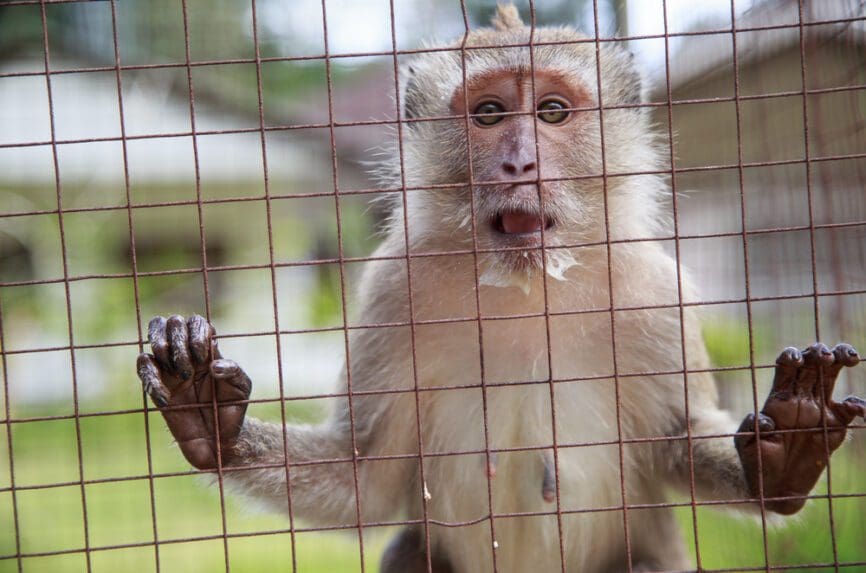
Bioethics Forum Essay
Primates in medical research: a matter of convenience, not sound science.
In Beaverton, Oregon, in one of seven National Primate Research Centers, a rhesus macaque sits in a cage awaiting her fate in an Alzheimer’s disease experiment. She is one of more than 100,000 monkeys–regarded by some neuroscientists as key to understanding dementia–forcibly separated from her family, traded as a commodity, and scheduled to die in a laboratory in the U.S. What are the current and future potential uses of nonhuman primates in research? The National Academies of Sciences, Engineering, and Medicine is examining this question.
Experiments on animals date back to at least 6 BCE when ancient Greek physicians, culturally forbidden from cutting open human bodies, turned to nonhuman bodies. By the 17th century, philosopher and scientist Francis Bacon asserted that the dissection of living animals could “sufficiently satisfy” as a substitute for human experiments. Although nonhuman primates have been dissected for ages, the systematic inclusion of nonhuman primates in research began in the last century .
After the Second World War, revelations of human research abuses led to the establishment of guidelines for the conduct of research with humans, such as the Nuremberg Code and the Declaration of Helsinki. By 1979, the National Commission for the Protection of Human Subjects of Biomedical and Behavioral Research, appointed by the U.S. Congress, published The Belmont Report , which laid ethical foundations for 20th century human research protections. The Belmont Report centered on the principle of justice and the importance of avoiding the selection of human research subjects based on convenience, accessibility, or manipulability.
While it was well-intentioned and rightly protected vulnerable populations, such as children and imprisoned persons, The Belmont Report encouraged a shift to research involving nonhuman primates and other animals. This shift has resulted in unresolved moral and scientific problems that can now only be addressed by another paradigm.
Today, unlike in the 17th century, scientists easily recognize the truth in the saying “mice lie and monkeys exaggerate,” which points to a well-known problem in biomedical research: using nonhuman primates and other animals in research fails more often than it succeeds. Approximately 90 percent of new investigational drugs–drugs that appear safe or effective in monkeys and other animals–fail to be safe and/or effective in humans. Nearly 100 percent of the drugs developed for Alzheimer’s in decades of research have failed . As researchers at the Oregon National Primate Research Center in Beaverton wrote in 2021, “in the rhesus macaque model of aging, all four major hallmarks of [Alzheimer’s disease]—significant cognitive decline, amyloid beta plaques, p-tau tangles, and neuronal death—do not reach the pathological levels of clinical [Alzheimer’s disease].” In other words, these monkeys do not develop Alzheimer’s disease.
If researchers were to extend The Belmont Report’s principle of justice to nonhuman primates and other animals, they would perhaps acknowledge that the continued use of these animals is a matter of convenience, accessibility, and their vulnerability to coercion rather than a matter of sound science. The translational failures of science discount lives that are utterly thrown away in experiments that we have good reason to expect will fail. Animals are treated like disposable equipment rather than as conscious, living, feeling beings.
Translational failures also harm humans—those who will face the risks of human experiments based on animal research and those who will continue to wait for medical treatments that are promised but not delivered. The translational failures of biomedical research are not just a scientific problem, but a moral problem—a failure to recognize the value of both nonhuman and human lives.
Failures to transform medical research are propelled by institutional biases and by limitations in transparency and in accountability for spending trends—all of which are complicated by long-standing relationships between the pharmaceutical industry, academia, and government. This network of influence has contributed to a shift away from health research and planning that was historically focused on the public interest to research priorities that are now largely driven by profit margins. Many stakeholders within the industry-academia-government complex have an interest in animal research remaining the norm. The National Primate Research Centers are a notable example.
Nonetheless, public pressure does from time-to-time break through and cause policy makers to reevaluate the norm. For example, in 2011, following a request from the U.S. Congress and the National Institutes of Health, an Institute of Medicine Committee on the Use of Chimpanzees in Biomedical and Behavioral Research concluded that most current uses of chimpanzees in research were unnecessary. Chimpanzees are humans’ closest living relatives, yet chimpanzee experiments are still viewed as unreliable and unnecessary. A growing number of physicians and scientists realize that evolutionary and individual differences within and across species impede the translation of animal research findings to humans—even for animals who are so like us.
This year, in response to a request from Congress and the NIH, the National Academies of Sciences, Engineering, and Medicine (comprising the former IOM) is again examining the use of nonhuman primates in research. But rather than asking if monkeys should be used in research, the NIH’s mandate to the NASEM committee leaves that important question off the table. To protect the status quo, the committee is comprised of individuals entrenched in primate research, and the only members to disclose conflicts of interest are those with an interest in nonanimal methods.
But the status quo isn’t working, as decades of science demonstrate. Across the US, the families of the estimated six million people living with Alzheimer’s disease—and the physicians treating them—are desperate for answers. They know the suffering Alzheimer’s can cause, and they want more effective prevention and treatment strategies.
As Thomas Insel, the former National Institute of Mental Health director, explained in his book Healing , we need to shift from relying on reductionist models of disease to looking at what patients, families, and communities living with various forms of psychiatric and neurological illness experience and need. This shift, overturning the status quo, requires investing in ethically designed studies that center on patients and population-based interventions, as well as on science that is centered on human biology and systems. Such a shift requires recognizing the failure of 17th century ideas, and reimagining and modernizing biomedical research to meet the real needs of patients and the demands of justice.
Hope Ferdowsian, MD, MPH, is an associate clinical professor at the University of New Mexico School of Medicine, and president and CEO of Phoenix Zones Initiative. @HopeFerdowsian
L. Syd M. Johnson, PhD, is an associate professor at the Center for Bioethics and Humanities and a clinical ethics consultant at Upstate Medical University in Syracuse, N.Y. @LSydMJohnson
Thanks, team for this reawakening call to end this vice, more resources need to be channeled to research on IT modeling as a replacement for the use of primates in biomedical research. #Animal lives matter #Animals too deserve another chance to live
Leave a Reply Cancel reply
Your email address will not be published. Required fields are marked *
Save my name, email, and website in this browser for the next time I comment.
Recent Content
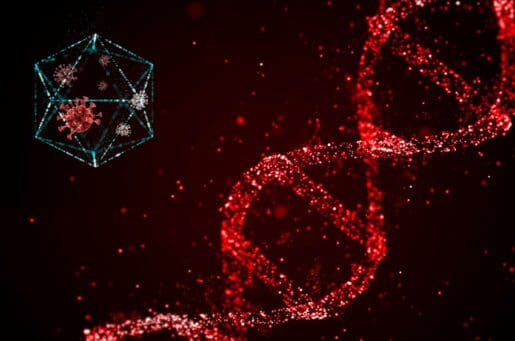
How to Avoid a Genetic Arms Race

In the Shadow of War: Health Conditions in the Za’atari Refugee Camp

Emerging from the Cacophony of Clinical Ethics Consultation

Financing Reforms to Meet a Pivotal Moment in Global Health
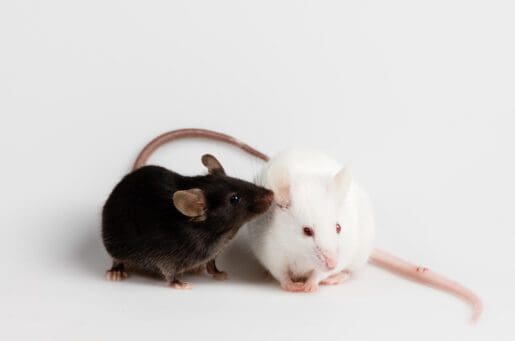
Today’s Politics Threatens Tomorrow’s Reproductive Technologies

A Thousand Double Binds: Alabama, Reproductive Freedom, and Child Health
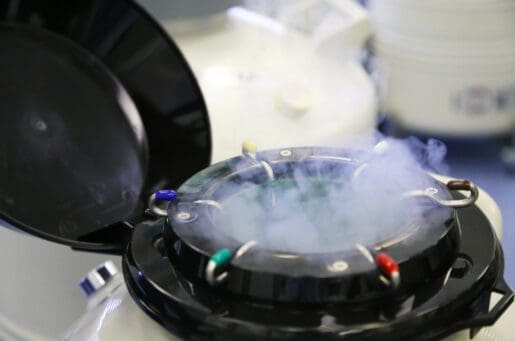
Fetal Personhood, IVF, and the Negligent Loss of Embryos

It’s Time to Change the Conversation About MAiD

The Neuralink Patient Behind the Musk

SpongeBob, Slime, and Brain Injuries: A Dangerous Combination for Kids

Considering the Duality of Nitrogen

Betty Rollin’s Assisted Death: Unanswered Questions
The opinions expressed here are those of the authors, not The Hastings Center.
- What Is Bioethics?
- For the Media
- Hastings Center News
- Diversity, Equity, & Inclusion
- Hastings Center Report
- Focus Areas
- Ethics & Human Research
- Bioethics Careers & Education
- Hastings Bioethics Forum
- FAQs on Human Genomics
- Bioethics Briefings
- Books by Hastings Scholars
- Special Reports
- Ways To Give
- Why We Give
- Gift Planning
- Sign up for Updates
Upcoming Events
Previous events, receive our newsletter.
- Terms of Use
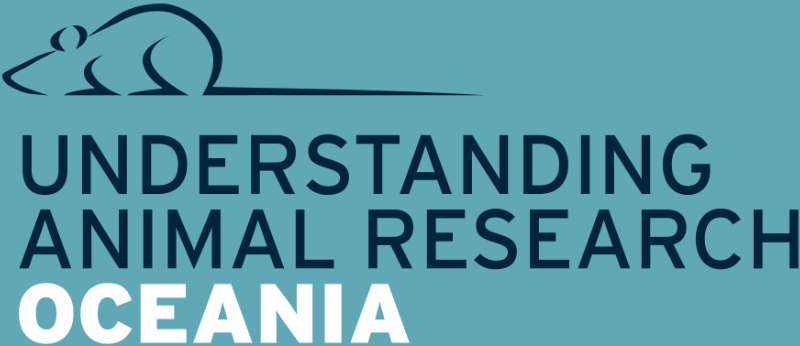
The most-often used monkeys in medical research are: Rhesus macaques ( Macaca mulatta ), Cynomolgus macaques ( Macaca fascicularis ) and Marmosets ( Callithrix jacchus ).
Monkeys currently make up only 0.1% of the animals used in research in Great Britain.
Why are monkeys used in research?
Human biology and disease can be studied in Monkeys because they are very similar to humans; biologically, anatomically, and physiologically. They have similar brains, muscle structure and reproductive and immune systems. This means research with monkeys give us results which are more relevant to humans compared perhaps with the information obtained from mice or rats.
However, because monkeys are complex animals with complex needs, they are only used when it is absolutely necessary.
View this post on Instagram A post shared by Understanding Animal Research (@understandinganimalresearch)
What types of research are monkeys used in?
Monkeys are used in a range of research which includes neurological disorders such as Parkinson’s disease, reproduction research, vision research and vaccines.
Monkeys see in colour and have binocular vision, like us. This makes them particularly useful for research into vision.
Rhesus macaque monkeys have been vital in the race for an effective vaccine against the SARS-COV-2 virus that causes COVID-19. They were used to show whether potential vaccines were effective and safe. Only after animals testing were vaccines trialled in humans.
Marmoset monkeys are are predominantly used to research into Parkinson’s disease. After the accidental discovery of MPTP, a substance that destroys a part of the brain and causes the symptoms of Parkinson, the substance is used to induce the symptoms of Parkinson’s in marmoset monkeys. This has helped scientists come up with new treatments for Parkinson’s disease. We filmed marmosets used in this research .
More examples of how monkeys are used in research are listed in our iBook: Primates in Medical Research .
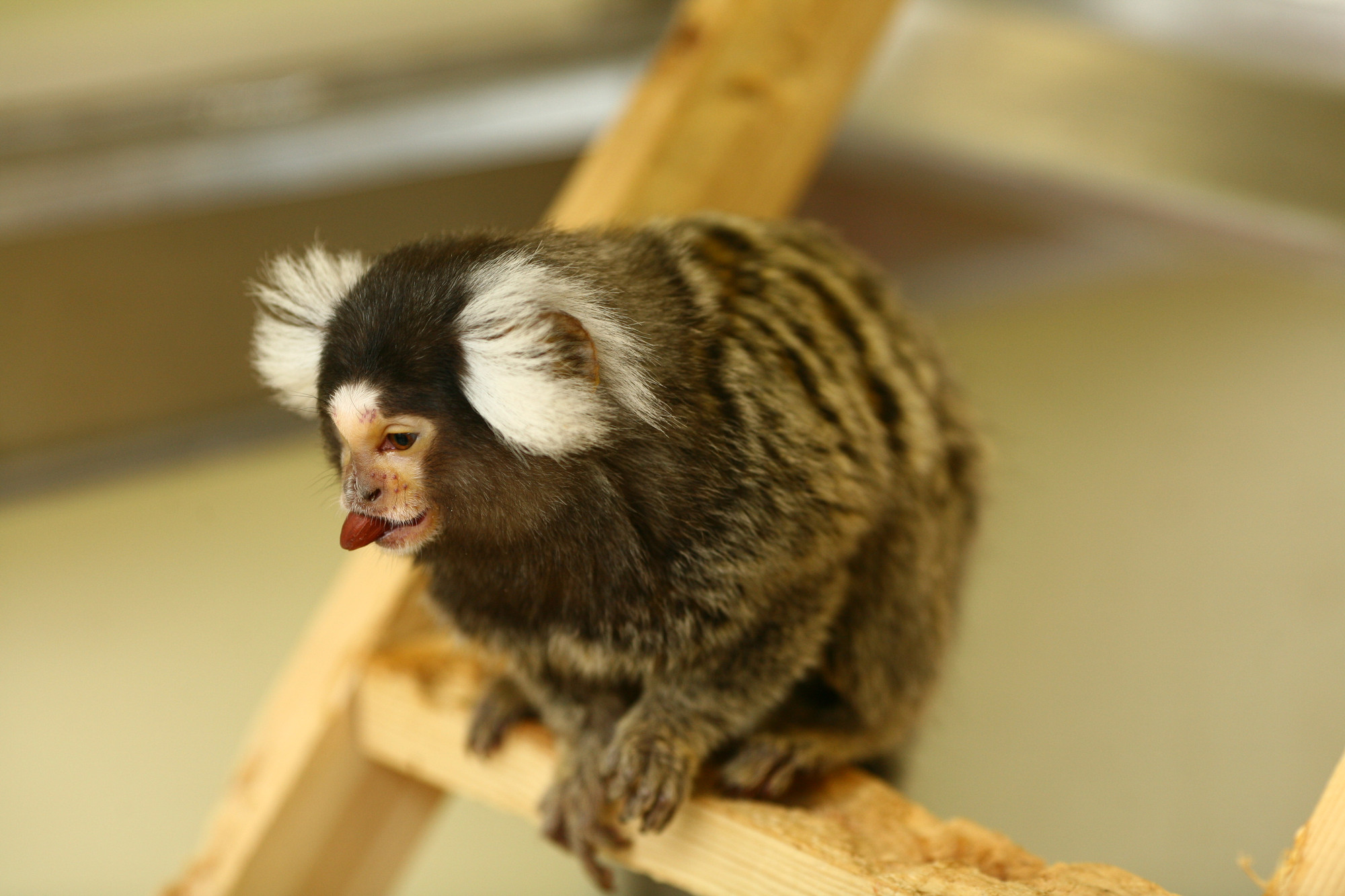
How are the monkeys looked after?
Due to their high levels of intelligence and sociability, monkeys are usually kept in pairs or groups, given ample vertical space to climb and swing and are encouraged to forage for food. This is to mimic their daily activity in the wild. As standard practice, vet is on call 24 hours a day and care is taken to ensure they do not suffer pain and discomfort.
You can watch macaques in the Oxford Primate facility in our online lab tour. You can look around and see videos of technicians and scientists talking about their work.
You can also see monkeys at the Centre for Macaques in this film. This is where most research monkeys used in the UK are bred and trained.
10 Facts about Monkeys
Find out more about monkeys in research with our 10 facts infographics and from these references:
https://www.britannica.com/animal/monkey
https://www.ncbi.nlm.nih.gov/pmc/articles/PMC5636196/
https://copublications.greenfacts.org/en/non-human-primates/l-2/2-research-safety-testing.htm
https://mrc.ukri.org/publications/browse/primates-in-medical-research/
Going further
Primate research remains controversial and has been the subject of vigorous campaigning by antivivisection groups in the past. Many independent and expert enquiries such as the Weatherall Report have concluded that there is a strong case for their use to advance scientific and medical knowledge, and in assessing the safety of new medicines. The use of primates, like other animals, should only be when there is no alternative, and should be subject to careful regulation.
Most research primates are macaques or marmosets. They are used in relatively small numbers (they make up around 0.1% of research animals) but they have been important in many important medical advances; for example the polio vaccine, life support systems for premature babies, and deep brain stimulation for Parkinson’s Disease. Currently the main areas of primate study are infectious diseases to develop vaccines and treatments for HIV/AIDS and malaria. Monkeys are also used in neuroscience to better understand the brain and treat conditions ranging from Alzheimer’s disease to schizophrenia. The other main research area is into reproduction, fertility and development in the womb. They are also used in safety testing new medicines and vaccines.
One particular example is the Cotton-top tamarin monkeys which have a high rate of spontaneous colon cancer. They develop colon cancer in a very similar way to humans, so investigations of whether colon cancer is heritable - as it can be in humans - are now a focus of research.
What the experts thought
The topic of using monkeys was the subject of the Weatherall Report in 2007. At the time the Government’s Chief Scientific Advisor, Sir David King FRS, said:
"Although rare, the use of primates in medical research and testing is invaluable, as an essential aspect of work which provides the best hope for breakthroughs in important areas such as neurodegenerative disorders and for aspects of immune and reproductive functions." MRC press release responding to the Weatherall Report, June 2007. "There is a strong scientific case for the carefully regulated use of non-human primates where there are no other means to address clearly defined questions of particular biological or medical importance." Weatherall Report: The use of non-human primates in research, December 2006 "Primates have been used in research aimed at understanding how complex brains work, as their neurological development and higher cognitive functions are very similar to humans… Animal [primate] disease models were also used for research on hepatitis C, and polio." Nuffield Council on Bioethics, The ethics of research using animals, May 2005 "... for certain experiments there are no alternatives to the use of non-human primates. Such experiments may be needed, for example, during the development of drugs and vaccines for prevention and cure of disease such as AIDS, TSE1, malaria, and influenza". European Commission Scientific Steering Committee (SSC), The Need for Non-Human Primates in Biomedical Research, April 2002 "Many significant advances in modern medicine have been based on research involving primates." MRC and Wellcome Trust, Primates in Medical Research, June 2006
Watch our videos
Parkinson's disease patient demonstrates his brain implant Marmosets in medical research Macaques in medical research
Related Links
Weatherall Report The use of non-human primates in research Response to Weatherall Report recommendations MRC/Wellcome Trust: Primates in Medical Research booklet EC SSC Report: The Need for Non-Human Primates in Research Nuffield Council on Bioethics report: The ethics of research using animals NC3Rs guidance: Non-human primates APC report: The use of Primates under the Animals (Scientific Procedures) Act (1986) with particular reference to regulatory toxicology Home Office report: Aspects of Non-human Primate Research at Cambridge University. A Review by the Chief Inspector FELASA response on primates in research European Academics Science Advisory Council (EASAC) statement Commission response to Written Declaration European Scientific Committee on Health and Environmental Risks (SCHER) opinion on primate research (January 2009)
Related documents
Featured news.
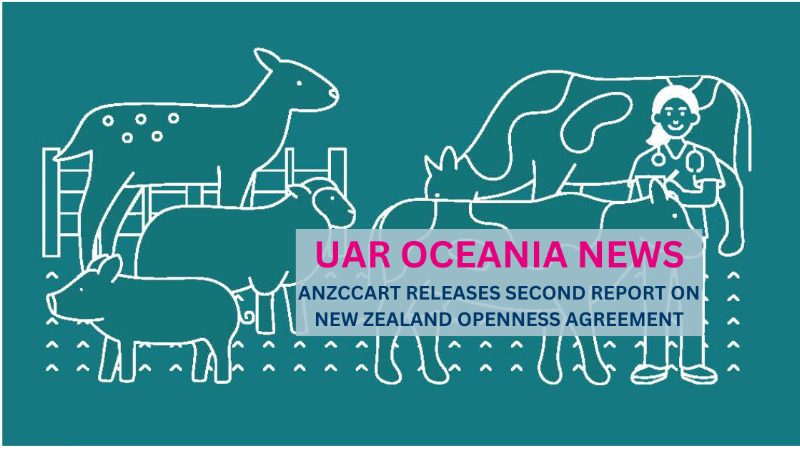
ANZCCART New Zealand releases second annual report on Openness Agreement
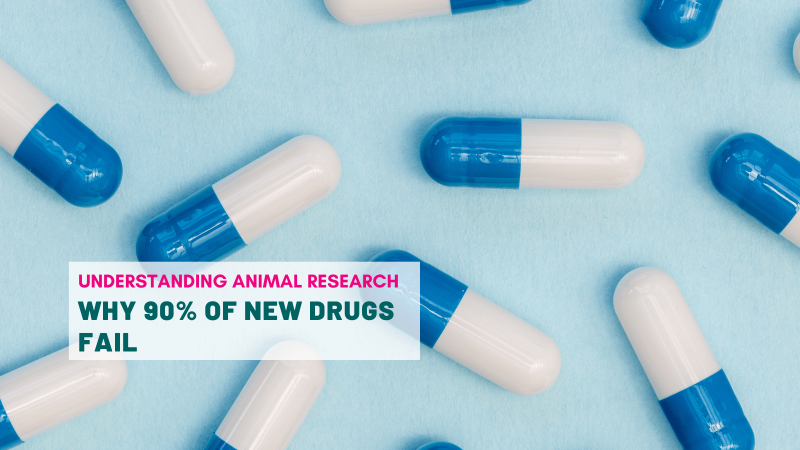
Why do 90% of drugs fail?
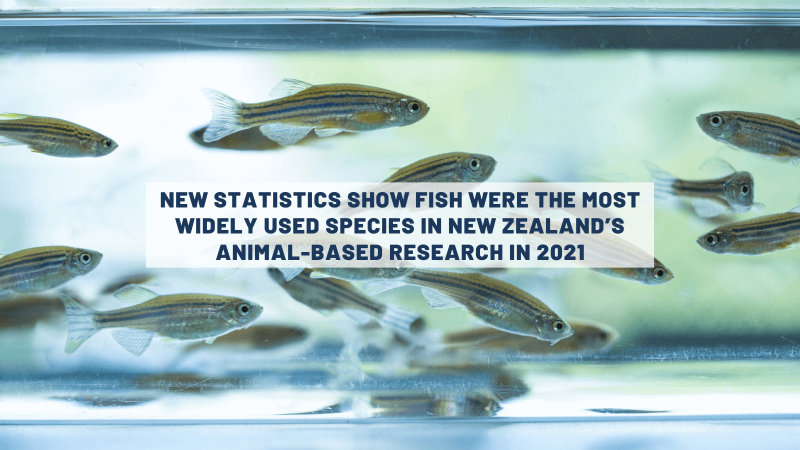
New statistics show fish were the most widely used species in New Zealand’s animal-based research in 2021
Subscribe to our newsletter.
Get the latest articles and news from Understanding Animal Research in your email inbox every month. For more information, please see our privacy policy .
How the race for a Covid vaccine enriched monkey poachers and endangered macaques
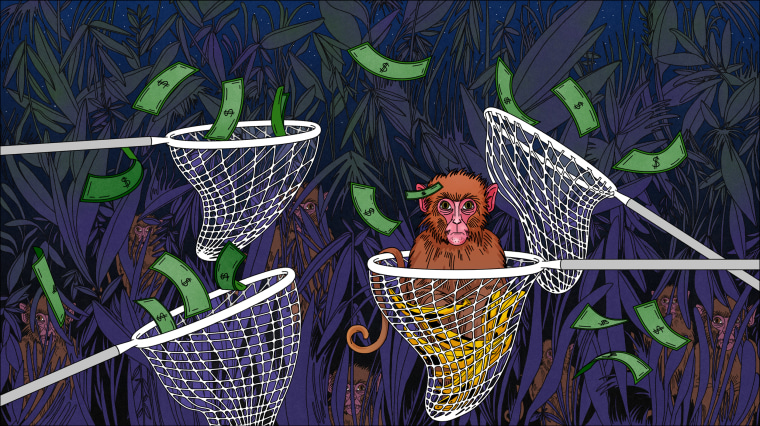
Gary Tucker was attending a conference on monkeys used in medical research when he spotted some uninvited guests: agents with the U.S. Fish and Wildlife Service.
As they walked in and out of the Colorado hotel, Tucker, an executive at a monkey import company, hid in the lobby to spy on them, according to federal prosecutors.
He had good reason to be wary. The agents were investigating whether his company, Orient BioResource Center, and its competitors were involved in an international monkey smuggling scheme in which endangered primates were being pulled from the wild and shipped to the United States for use by government researchers and pharmaceutical companies.
Tucker’s actions that day in October 2019 included taking photos of the agents and urging people at the conference not to talk to them, according to prosecutors who have been working with wildlife officials to crack down on an industry that plays a critical role in drug and vaccine development but largely operates in secrecy.
"It’s a dirty business, and it’s extremely difficult to get to the bottom of," said Ed Newcomer, a former Fish and Wildlife Service agent who investigated monkey importers and exporters in the U.S. and southeast Asia during his 20 years with the agency.
Tucker, 65, pleaded guilty last year to lying to federal agents about the company’s operations in Cambodia.
And just last month, the Justice Department charged eight people, including two Cambodian wildlife officials, with conspiring to poach monkeys from the wild and send them to the U.S. with falsified paperwork claiming that they came from breeding centers.
But the cases represent only the tip of the iceberg, according to former wildlife agents.
The smuggling of monkeys caught in the wild is believed to have been going on for years due to the colossal demand for laboratory monkeys in the U.S. and the limited supply at breeding facilities at home and abroad. The arrival of the pandemic and the race to find a Covid vaccine squeezed the market even further, experts say, setting off a mad scramble for the animals that fueled a spike in monkey poaching and contributed to the endangerment of the species most commonly used in drug studies — the long-tailed macaque.
"It’s gotten out of hand," said Malene Friis Hansen, the director of the Long-tailed Macaque Project, a Denmark-based nonprofit group focused on conserving the primates. "The insane demand coming from the U.S. is driving the trade to an unsustainable level."
A booming business
The U.S. leads the world in the number of primates it imports for medical research. Between 2017 and May, more than 150,000 monkeys arrived in the U.S. to be used in experiments, according to figures from the Centers for Disease Control and Prevention.
Researchers say monkeys have been crucial to understanding different types of human conditions, from AIDS to Parkinson’s disease, as well as ensuring the safety and efficacy of new drugs.
China was long the main supplier of primates to the U.S., but it banned the sale of wildlife at the start of the pandemic in March 2020. The move upended the international trade in monkeys at a time when research facilities desperately needed them for future vaccine trials.
With the demand soaring, the price of monkeys skyrocketed. A single long-tailed macaque could fetch $40,000 at the height of the pandemic — up from $3,000 just a couple of years earlier.
"It’s inconceivable to me how high it went," said Greg Westergaard, the founder and CEO of Alpha Genesis, a South Carolina-based company that breeds and sources monkeys for pharmaceutical companies and government researchers.
With China out of the game, countries such as Mauritius and Cambodia stepped in.
Cambodia is home to a number of macaque breeding farms, but they receive little scrutiny and the paperwork that accompanies monkeys imported to the U.S. is easy to fudge, wildlife experts say — a dynamic that makes it nearly impossible to ensure that the animals are, in fact, bred in captivity.
It wasn’t long before conservationists began noticing an increase in reports of monkeys being pulled out of the wild by poachers in Southeast Asia lured by the huge profits at stake.
"These guys know what they’re doing," said Edwin Wiek, the founder of the Wildlife Friends Foundation Thailand, an animal rescue group. "They’re not just going out there and taking whatever they can catch. They’re really trying to take the cherries off the cake."
In 2019, Cambodia supplied 8,571 of the 33,818 research monkeys imported to the U.S., or 25%. In 2021, the number of monkeys from Cambodia more than doubled to 18,870, making up nearly 60% of the 31,844 research monkeys brought to America.
The dramatic increase has led some experts to question whether Cambodia’s breeding farms are actually capable of producing that many monkeys.

A colony with 100 females of breeding age would produce at most 60 to 70 offspring in a given year, Westergaard said. He noted that it would take another two to three years for the baby monkeys to reach an age where they’re suitable for research.
"It takes a very long time to establish a good primate supply," he said. "It’s not something that can be done in a hurry, and it cannot be done on the cheap."
"You can imagine with that much financial incentive, you’re going to have all sorts of newcomers who are not in it for the long term and may not have a history of performing ethically," Westergaard added.
The trade has already had a significant impact on the populations of long-tailed macaques in the wild, which play a critical role in forest ecosystems by dispersing seeds. In July, the International Union for Conservation of Nature changed their status from “vulnerable” to “endangered,” citing their use in medical testing as a driving force.
"This species will be going extinct or functionally extinct by the end of the 21st century if we don’t change anything right now," said Agustín Fuentes, a Princeton University biological anthropologist.
The upheaval in the monkey trade has also had other consequences.
Between 2019 and 2021, the number of monkeys found dead on arrival in the U.S. or that died within 30 days rose sharply — from 77 to 136 — despite there being 2,000 fewer imported monkeys overall, according to CDC data obtained by NBC News through a public records request.
It’s difficult to conclude what could be driving the increase, experts say, and the dead monkeys still account for less than 1% of those that arrive in this country.
But the escalating death figures provide more ammunition to animal rights groups and others who argue that the trade in research monkeys is cruel and inhumane — and poses a public health risk due to the threat of monkey-borne illnesses spreading to humans.
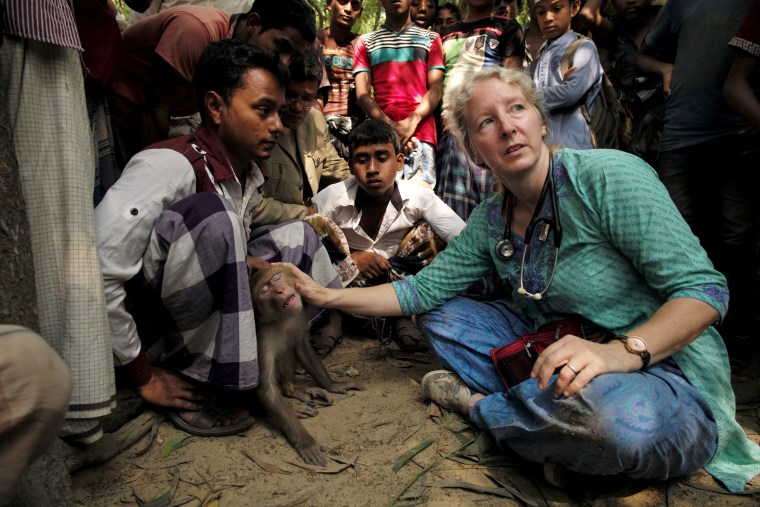
“When you take a macaque out of its natural habitat and you start channeling them down this pipeline towards the laboratories in the U.S. or the E.U., you’re setting off a chain reaction for the potential for disease spillover and transmission,” said Lisa Jones-Engel, a former primatologist and researcher at the Washington National Primate Research Center who is now an adviser to People for the Ethical Treatment of Animals, or PETA.
“It’s a recipe for the next pandemic.”
Investigative hurdles
The trade in long-tailed macaques is regulated by the Convention on International Trade in Endangered Species of Wild Fauna and Flora, or CITES, a 1975 treaty designed to ensure that the global market for certain plants and animals doesn’t threaten their survival in the wild.
CITES determines, for instance, how many protected animals a country is allowed to export. It can also bar a country from exporting animals like long-tailed macaques, as it did for Laos in 2016 after investigations found that traders there were selling monkeys caught in the wild to dealers in China, Vietnam and Cambodia who were exporting the animals to other countries falsely labeled as originating in their own.
Cambodia has faced accusations of “monkey laundering” for a number of years now. In 2015, a research arm of CITES called the Species Survival Network submitted a document to the convention that said field investigations in Cambodia found that long-tailed macaques were being trapped without permits in two provinces and transferred to breeding farms.
"To avoid detection by the authorities, the animals were reportedly brought into the farms during the night, hidden under packs of ice in vehicles which had been adapted to hold cages," the document says.
The Fish and Wildlife Service has been concerned about the industry for years, former agents told NBC News, but efforts to investigate it have been stymied repeatedly.
Newcomer, the retired agent, said he realized how difficult it would be to build a case against monkey import companies when he was tasked with developing sources at an industry event many years ago.
"I had to have a tighter undercover persona for that one event than I had to work with gang members in South L.A. who would kill me if they knew who I was," he said.
Craig Tabor, a former Fish and Wildlife Service agent who retired last year, said he looked into monkey laundering allegations more than a decade ago, but the investigation was ultimately dropped due in part to concerns about whether wildlife officials overseas could be trusted.
"We'd be dealing with unknown players in foreign governments, many of whom are very corrupt," he said. "We had no way of knowing who had been paid off by illegal actors to help facilitate getting these animals out of the country of origin and into the U.S."

One of the Cambodian officials charged in the indictment unsealed last month is accused of personally delivering monkeys caught in the wild to a facility run by Vanny Resources Holdings, a Hong Kong-based company that breeds monkeys for research. The suspect, Masphal Kry, 46, who was arrested at John F. Kennedy International Airport, has not yet entered a plea, and his lawyer did not respond to a request for comment.
Two unidentified companies in the U.S. -- one in Florida and one in Alice, Texas -- imported hundreds of the wild-caught monkeys, according to the indictment, which referred to the companies as unindicted co-conspirators.
The tiny town of Alice was the home of Orient BioResource Center, the company where Tucker was a vice president when he was charged with lying to federal agents.

In that case, he admitted to falsely claiming that the company didn’t produce reports detailing the conditions of the breeding facilities in Cambodia and the numbers and characteristics of the monkeys held in them.
The reports would provide prosecutors with a "true picture of the various facilities, which it believes are in fact laundering and illegally marketing in the world market captured animals — animals taken illegally from the wild under the treaties and under U.S. law and sent to the U.S. with false documentation," Assistant U.S. Attorney Thomas Watts-Fitzgerald said at Tucker’s sentencing in October 2021, according to a transcript of the hearing.
"And that’s what they’re all afraid of," he added.
Tucker, who was sentenced to three years of probation, did not respond to requests for comment.
Orient BioResource Center was purchased by another company, Inotiv, in January. Inotiv has acknowledged that Orient and a second subsidiary, Envigo Global Services, were subpoenaed in the federal probe.
“Inotiv is fully cooperating with the ongoing federal investigation concerning the importation of non-human primates,” a spokesperson said in response to a request for comments. “Gary Tucker left Orient BioResource Center in connection with Inotiv’s acquisition of such company, and has never been an Inotiv employee.”
Earlier this week, Inotiv announced that it is not importing monkeys from Cambodia for now and it is refraining from selling or delivering any of the Cambodian monkeys at its facilities in the U.S. until they can be “reasonably determined to be purpose-bred.”
But Cambodia is still exporting primates to the U.S. and elsewhere, local officials said.
Tracking monkey shipments
The monkey shortage spurred by China’s export ban has prompted some American scientists to call for a new effort to boost the country’s domestic supply of primates for research.
The U.S. government operates seven primate centers that house about 21,000 macaques, baboons and other species.
Deborah Fuller, the associate director of research at the Washington National Primate Research Center, said the role monkeys played in the development of Covid vaccines underscores how vital they are to drug research.

"I would say that our ability to have developed vaccines within a year, if it weren’t for nonhuman primates, we would still be sitting around waiting for a vaccine right now," she said.
The decades long effort by animal rights groups to derail the monkey trade has made some impact.
Facing opposition from activists, most passenger airlines have stopped transporting monkeys in recent years.
But the primates are still arriving in droves in cargo planes that land in major cities, where they are met by Fish and Wildlife Service inspectors in protective suits who look over paperwork but tend to perform only cursory inspections of the animals themselves, according to former agents.
The animals are then loaded into unmarked vans and driven to quarantine facilities that are sometimes hundreds of miles away. The monkeys must remain at the quarantine facilities for 31 days, where they are tested for a range of illnesses, including tuberculosis and herpes B.
From the time they’re loaded onto a truck in their host countries to the time they arrive at quarantine facilities in the U.S., the monkeys can be in transit for well over a full day.
Sometimes, accidents happen along the way.
In March, a truck hauling monkeys from Kennedy Airport to a Missouri facility was struck by another vehicle on a Pennsylvania highway, sending several monkey crates onto the road.
Three monkeys escaped from their cages and bolted into the woods. They were later tracked down and shot dead by wildlife officers.
A motorist, Michele Fallon, unexpectedly came face to face with one of the caged monkeys after she stopped to check on the drivers in the crash. She wound up with pink eye-like symptoms that cleared up after a few days (It’s not clear if her symptoms were caused by the animals).
"I was in shock — I just couldn’t believe it was transporting monkeys," she said. "The cages did not say anything about there being dangerous animals inside or ones that you could get sick from."
The incident shined a rare spotlight on the monkey trade, which largely goes on outside the view of the public.
"I don’t think we can underestimate the stress and the suffering that these animals are subjected to when they’re transported across these time zones, across different climates for up to 30 hours or so," said Sarah Kite, the co-founder of the animal rights group Action for Primates. "These are highly sensitive individual animals who have been confined and imprisoned in these small transit crates."
She relies on a network of informants at airports in Southeast Asia and Europe to help her track flights of primates to the U.S. and elsewhere.
"Very little is made public about mortalities on board or injuries or illness or disease — that’s something that doesn’t reach the public domain," Kite said.
Fuentes, the Princeton University primate expert, doesn’t advocate for a blanket ban on the use of monkeys for medical testing but he believes the industry needs to be brought out of the shadows.
"If this was totally above board and there were no illegal or otherwise shady dealings going on … then why is it so hard to find information about them," he said.
This article was developed in partnership with the Pulitzer Center’s Rainforest Investigations Network.
Rich Schapiro is a reporter for the NBC News Investigative Unit.
Anna Schecter is a senior producer in the NBC News Investigations Unit.
Andrew W. Lehren is a senior editor with the NBC News Investigative Unit.
Anton L. Delgado is a journalist for the Southeast Asia Globe based in Phnom Penh, Cambodia. He is also a Pulitzer Center Rainforest Investigations Network fellow.
Primate Disappearing at ‘Alarming Rate,’ as Medical Research Fuels Demand

It Took Us Less Than 24 Hours to Order an Endangered Tiger on Facebook
China is running out of lab monkeys to experiment on, inside the secret lives of india’s independent wildlife rescuers.
“The most brutal incident involved the killing of one captured male. Beaten down with a pole, the dazed and injured animal was dragged by his tail.”
Rhino Horns, Tiger Teeth and 6 Tonnes of Ivory Seized in $18M Record Bust
Get the latest from vice news in your inbox. sign up right here..
By signing up, you agree to the Terms of Use and Privacy Policy & to receive electronic communications from Vice Media Group, which may include marketing promotions, advertisements and sponsored content.

Scientists Discover a Subtle Difference in How Monkeys Perceive The World
N ew research has uncovered an intriguing advantage human vision has over that of our monkey cousins. Thanks to small differences in the structure of the retina, our eyes are able to perceive a greater range of blue tones.
The findings, reported by researchers from the University of Washington, the Medical University of Vienna, and the University of Sydney, shed light on how human beings have evolved since diverging from ancient monkey lineages some 25 million years ago.
"Here, we compare the synaptic connectome for a color-coding circuit in the human retina with the comparable circuits in both marmoset and macaque monkeys," the researchers write in their published paper.
"We discover a circuit in humans that is absent in marmosets and show further that for the human retina synaptic motifs do not follow the canonical architecture established in macaque monkeys."
The researchers focused on a part of the eye called the fovea , which forms a dimple in the retina at the back of the eye that's packed with light sensitive cells shaped like tiny cones. These cones detect waves of light, and the fovea is crucial for picking out detail (when reading or driving, for instance).
Different types of cones are designed to process different waves of light – either short, medium, or long. These cones work together in different combinations to create the light tasting neural circuits which the brain processes as color.
The researchers found that connections between short-wave cones with long and middle-wave cones that exist in humans, a circuit sensitive to blue light, are mostly missing in marmosets and macaques. There were other minor variations too in the neural circuitry at work.
"Our results may help to explain why some aspects of human color perception are not well predicted from physiological studies of the macaque monkey visual system," write the researchers.
As they're so closely related to us, monkeys are often used in sight studies, but this new research adds certain caveats that should be considered when trying to apply the results of these studies to human beings.
Exactly how and why this difference has come about isn't explored in this particular paper, but the researchers have some ideas. Monkeys tended to stay up in the trees, for example, whereas humans explored open land – it may be that certain sight features evolved to better find food and stay alive in these two scenarios.
The results of this study also add some interesting detail to what we know about how we process visual information and send it to the brain – and looking at the eye at even smaller scales should bring about further revelations.
"Our results predict that early-stage chromatic signals are distinct in the human retina and imply that solving the human connectome at the nanoscale level of synaptic wiring will be critical for fully understanding the neural basis of human color vision," write the researchers.
The research has been published in PNAS .

- Alzheimer's disease & dementia
- Arthritis & Rheumatism
- Attention deficit disorders
- Autism spectrum disorders
- Biomedical technology
- Diseases, Conditions, Syndromes
- Endocrinology & Metabolism
- Gastroenterology
- Gerontology & Geriatrics
- Health informatics
- Inflammatory disorders
- Medical economics
- Medical research
- Medications
- Neuroscience
- Obstetrics & gynaecology
- Oncology & Cancer
- Ophthalmology
- Overweight & Obesity
- Parkinson's & Movement disorders
- Psychology & Psychiatry
- Radiology & Imaging
- Sleep disorders
- Sports medicine & Kinesiology
- Vaccination
- Breast cancer
- Cardiovascular disease
- Chronic obstructive pulmonary disease
- Colon cancer
- Coronary artery disease
- Heart attack
- Heart disease
- High blood pressure
- Kidney disease
- Lung cancer
- Multiple sclerosis
- Myocardial infarction
- Ovarian cancer
- Post traumatic stress disorder
- Rheumatoid arthritis
- Schizophrenia
- Skin cancer
- Type 2 diabetes
- Full List »
share this!
April 16, 2024
This article has been reviewed according to Science X's editorial process and policies . Editors have highlighted the following attributes while ensuring the content's credibility:
fact-checked
trusted source
written by researcher(s)
Man who caught virus from a monkey in a critical condition—B virus explained
by Colin Michie, The Conversation
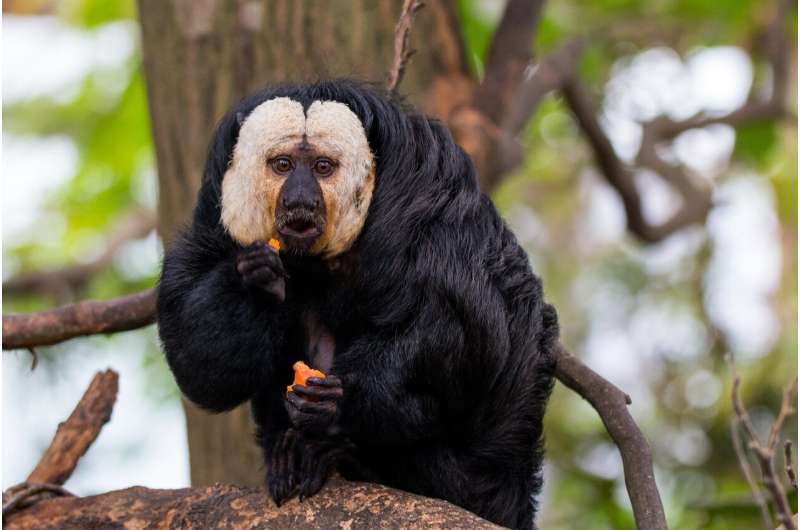
A 37-year-old man wounded by a wild monkey in Hong Kong is in intensive care suffering from infection with B virus.
Although this is the first reported case of a B virus infection in a human in Hong Kong, it is not the first in the world. The US Centers for Disease Control and Prevention has recorded 50 cases of human infection since 1932, when the virus was first identified. Twenty-one of those infected died .
The first person—as far as we know—to catch B virus was a young doctor called William Brebner . He was bitten by a macaque monkey while researching poliovirus. The bite wound healed, but neurological illness eventually ensued, leading to respiratory failure. Brebner died at Bellevue Hospital, New York, in November 1932.
After his death, his brain tissues were found to cause neurological damage when injected into rabbits. Brebner's colleagues Albert Sabin and Arthur Wright labeled this agent "B" .
We now know that the virus belongs to the herpes family, hence its other moniker: " herpes virus B". It is a biosafety category 4 virus , the highest level—the same as Ebola and unknown new pathogens.
Prompt treatment with antiviral drugs can be lifesaving, but B virus remains a deadly pathogen. If not treated promptly, it has a mortality rate of 70% . There is no vaccine against this virus.
Most cases of B virus infection have involved laboratory workers handling captive animals or monkey tissues, rather than those living alongside these excitable, toothy animals in the wild.
Old World primates
In this most recent case, the 37-year-old man was attacked by macaques at Hong Kong's Kam Shan Country Park—known locally as Monkey Hill. There are about 1,800 wild monkeys in Hong Kong, including two different macaque species. The authorities are warning people not to approach these creatures.
Macaques are a particularly adaptable group of old world primates with a wide global distribution. They live in towns, villages and temples across Asia and have been introduced elsewhere. They include the Barbary apes of Gibraltar, which were provided with rations by the British army after the second world war.
They are eaten as a delicacy in Indonesia and sold elsewhere as bush meat. Indonesian folklore through the centuries provides detailed observations of these creatures, but reassuringly no evidence that macaques caused harm to humans.
Despite lots of contact with many humans, there are remarkably few recorded episodes of spill-over of B virus outside laboratories. The virus does not spread easily .
A few cases show that bites and scratches from a macaque, or contact with the monkey's mouth, nose or body fluids can transfer B virus that may be on the animal's skin or in its mouth. (Most macaque populations harbor B virus, but without symptoms.)
Signs of infection in a human usually develop within two to 30 days. There may be blisters around the contact point or wound, together with a flu-like illness.
The virus can spread to lymph nodes and the nervous system. This causes agitation, confusion, double vision, trouble with coordination and muscle weakness.
Patients can develop hiccups if this inflammation involves the brain stem. If it reaches the lungs, they may need to be admitted to an intensive care unit.
No immediate fear
Spread of this virus between humans is highly unlikely. Only one account describes the spread of B virus from one human to another. The contact case was linked to the use of a cream previously used on a patient .
There is no evidence of a new B virus strain in the primates on Monkey Hill, so this case of herpes B has no features of a new zoonosis. However, it should raise our awareness of the potential risks posed by viruses carried by animals.
Explore further
Feedback to editors

Occupations that are cognitively stimulating may be protective against later-life dementia
14 hours ago

Researchers develop a new way to safely boost immune cells to fight cancer
Apr 19, 2024

New compound from blessed thistle may promote functional nerve regeneration

New research defines specific genomic changes associated with the transmissibility of the mpox virus

New study confirms community pharmacies can help people quit smoking

Researchers discover glial hyper-drive for triggering epileptic seizures

Deeper dive into the gut microbiome shows changes linked to body weight

A new therapeutic target for traumatic brain injury

Dozens of COVID virus mutations arose in man with longest known case, research finds

Researchers explore causal machine learning, a new advancement for AI in health care
Related stories.

Chinese man dies of rare virus from monkeys
Jul 19, 2021

Cambodia reports a new bird flu case, the brother of a 9-year-old who died of the virus
Feb 12, 2024

New study confirms double the risk of dementia after mouth herpes simplex virus
Feb 14, 2024

No new Nipah cases detected in India: WHO
Oct 4, 2023

We don't have a cure for monkeypox virus, but the body can heal itself
May 31, 2019

Nipah virus outbreak in India: What you need to know
Sep 20, 2023
Recommended for you

How myeloid cell replacement could help treat autoimmune encephalomyelitis

Retrospective genomic characterization of the 2020 Ebola outbreak

Signs of multiple sclerosis show up in blood years before symptoms, study finds

DNA vaccine against Zika performs well in tests on mice
Apr 18, 2024
Let us know if there is a problem with our content
Use this form if you have come across a typo, inaccuracy or would like to send an edit request for the content on this page. For general inquiries, please use our contact form . For general feedback, use the public comments section below (please adhere to guidelines ).
Please select the most appropriate category to facilitate processing of your request
Thank you for taking time to provide your feedback to the editors.
Your feedback is important to us. However, we do not guarantee individual replies due to the high volume of messages.
E-mail the story
Your email address is used only to let the recipient know who sent the email. Neither your address nor the recipient's address will be used for any other purpose. The information you enter will appear in your e-mail message and is not retained by Medical Xpress in any form.
Newsletter sign up
Get weekly and/or daily updates delivered to your inbox. You can unsubscribe at any time and we'll never share your details to third parties.
More information Privacy policy
Donate and enjoy an ad-free experience
We keep our content available to everyone. Consider supporting Science X's mission by getting a premium account.
E-mail newsletter

- by Greg Watry
- April 18, 2024
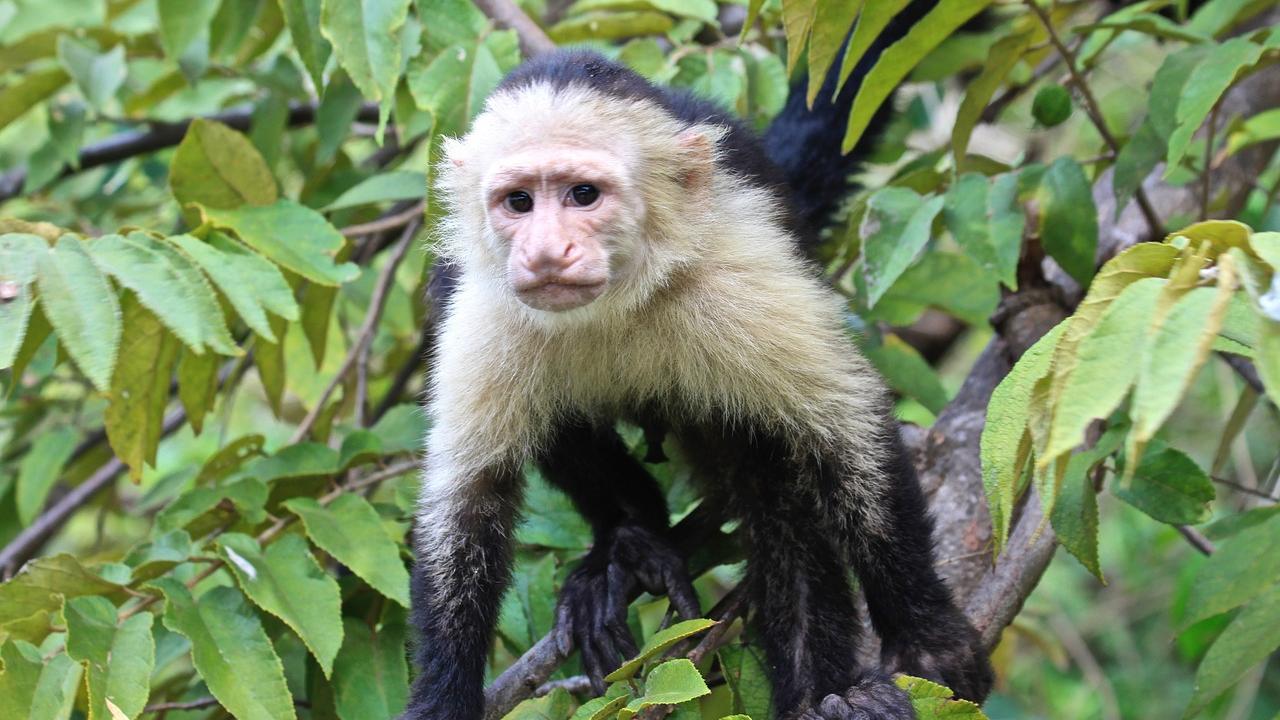
The use of stone tools by the white-faced capuchin monkeys was first noticed by a botanist.
In 2004, while collecting observations for her book Guía Botaínica del Parque Nacional Coiba (Botanical Guide of Coiba National Park) , Alicia Ibáñez noticed that some of the monkeys living in Coiba National Park used rocks to crack open sea almonds.
“It was just kind of offhandedly mentioned and if you’re not within the field, you don’t necessarily realize how exciting that is,” said Meredith Carlson, a UC Davis Ph.D. candidate in the Department of Anthropology’s evolutionary wing. “So, she published this in her book and then, eventually, it made its way to the right people who were interested in that sort of thing.”
Among those people was UC Davis Associate Professor of Anthropology Nicolas Zwyns , a field archaeologist specializing in stone tools. While stone tool use has been observed in other wild primates, including chimpanzees, robust capuchins and macaques, the white-faced capuchins of Coiba National Park provide a unique natural laboratory to study the evolution of stone tool use in real-time.
“Those islands are the only place in the world where this particular species of monkey is known to use stone tools and it’s really concentrated in two little populations,” said Carlson, whose research with Zwyns puts her on the forefront of the burgeoning field of primate archaeology. “When we think about archaeology, it means looking at ancient artifacts to learn something about humans. My research is really about combining methods of archaeology, so that as a way of doing science, with questions more about living primates.”
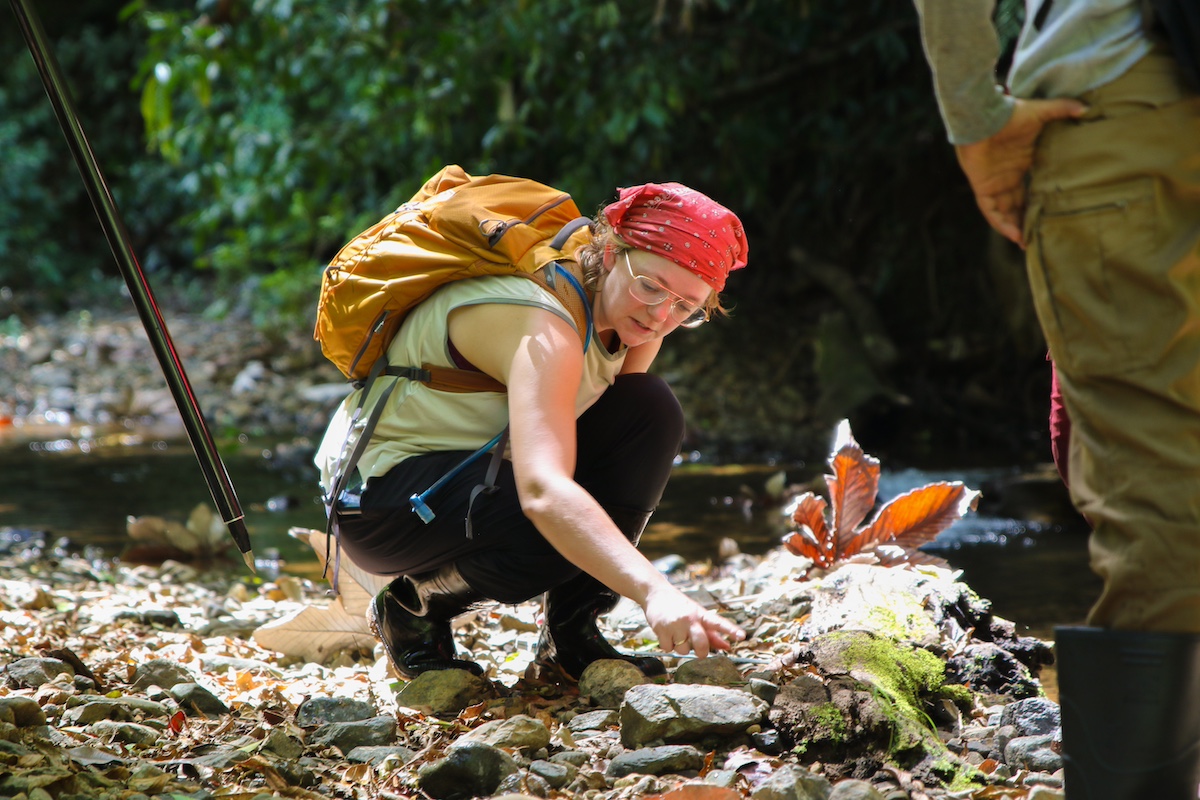
The rise of percussion behavior
For the last six years, Carlson has studied the ongoing development of stone tool use in white-faced capuchins on the islands of Coiba and Jicarón , both located within Coiba National Park. The islands are separated by about 22 kilometers, and on each island, there are multiple populations of white-faced capuchins. But according to Carlson, only about one or two groups per island showcase “percussion behavior,” or hammering stuff open with rocks.
“Their favorite food to open with tools is sea almond nuts,” Carlson said. “But they’ll also occasionally go after other things, like hermit crabs, which there’s a ton of in this area, Halloween crabs, which are this kind of spooky-looking purple land crabs, and coconuts.”
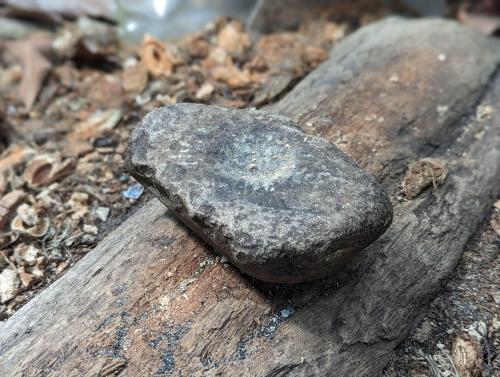
What’s curious about the stone tool use of the Coiba National Park’s white-faced capuchins is the fact that the behavior doesn’t seem to be widespread. This has led Carlson and other researchers to ponder how stone tool use arises. Does it arise independently or is it culturally transmitted? If it arises independently, why in these specific populations and not others?
“It actually seems to be pretty limited in how much it spreads and transmits, which was really surprising to me because it seems what a great thing to do,” Carlson said. “You get more out of your environment, make more of your circumstances.”
In a paper published by Royal Society Open Science, Zywns and others posited four hypotheses regarding the origin and use of stone tools in animals. One theory suggests that the availability of materials that can be used as tools drives tool usage. Another proposes that embedded, or hidden, foods cause animals to seek out tools for extraction purposes.
No conclusion has been reached yet for origin of stone tool use in white-faced capuchins.
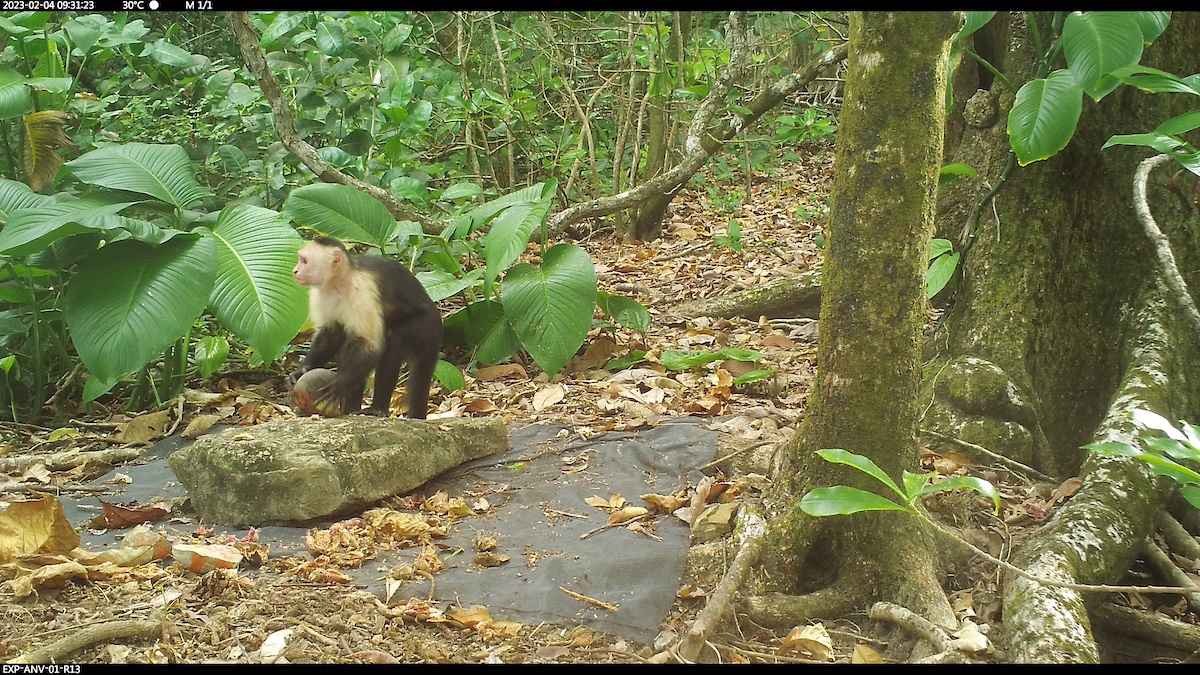
Primate archaeology in action
With the discipline of primate archeology being so new, Carlson has a hand in helping define it. Long fascinated by questions about humanity’s origin and evolution, she solidified her interest in archeology while studying for her undergraduate degree in anthropology at Bryn Mawr College. During that time, she attended field schools in Kenya, a hotspot for human evolution research.
“When I arrived at UC Davis, I knew I was interested in this idea of tool use in general, maybe the early origins of it, but I did not yet have a connection to a non-human primate project,” Carlson said.
That changed when she met Zwyns, who was seeking someone to take the lead on the archaeological component of the fieldwork in Coiba National Park. For Carlson, who’s traveled to the field site five times, that shift from studying humans to non-human primates opened a door to possibly better understanding the archaeological record.
“One of the really cool opportunities of studying living primates is you actually watch how one thing becomes the other,” said Carlson, who’s collecting video recordings of stone tool use in white-faced capuchins. “We get to see how some behavior captured on video turns into a pile of nutshells and stones over months and years. We can sort of test out, does the archaeological record really form the way we assume it does.”
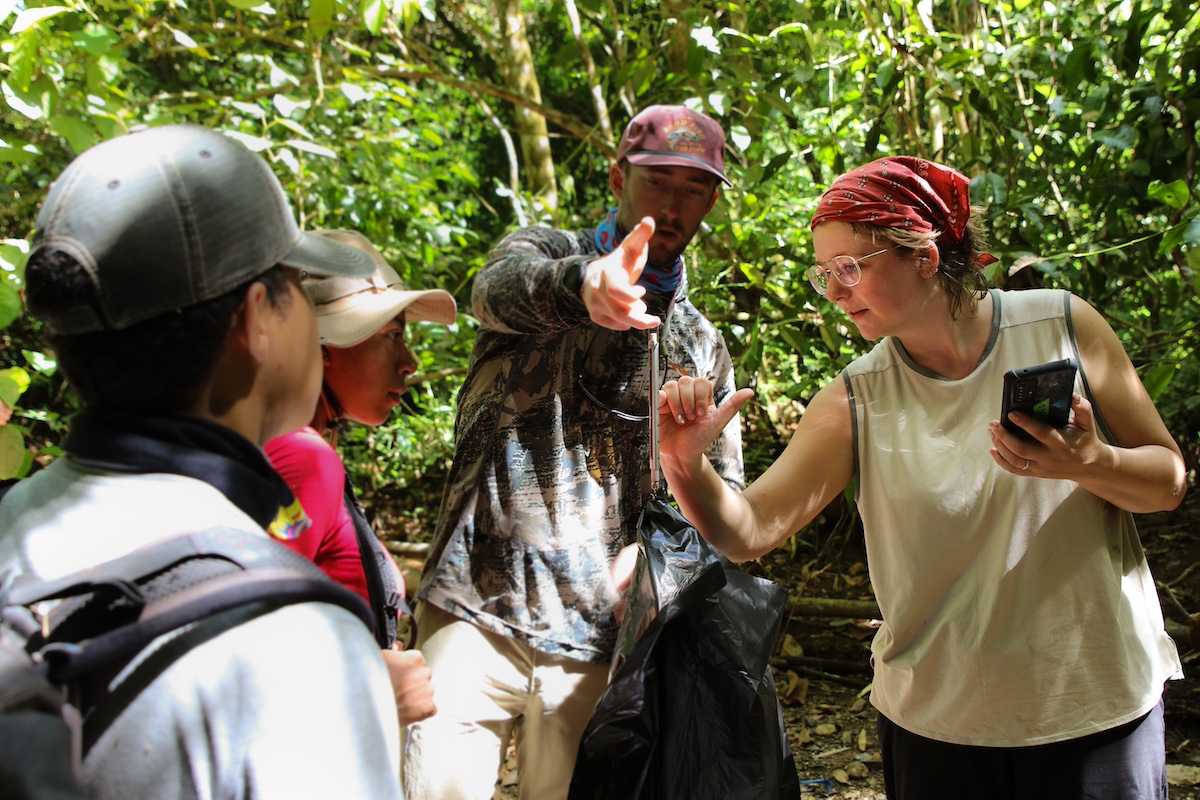
Primary Category
- AI Generator
Russian Scientists Test Health Effects Of Life In Space On Monkeys
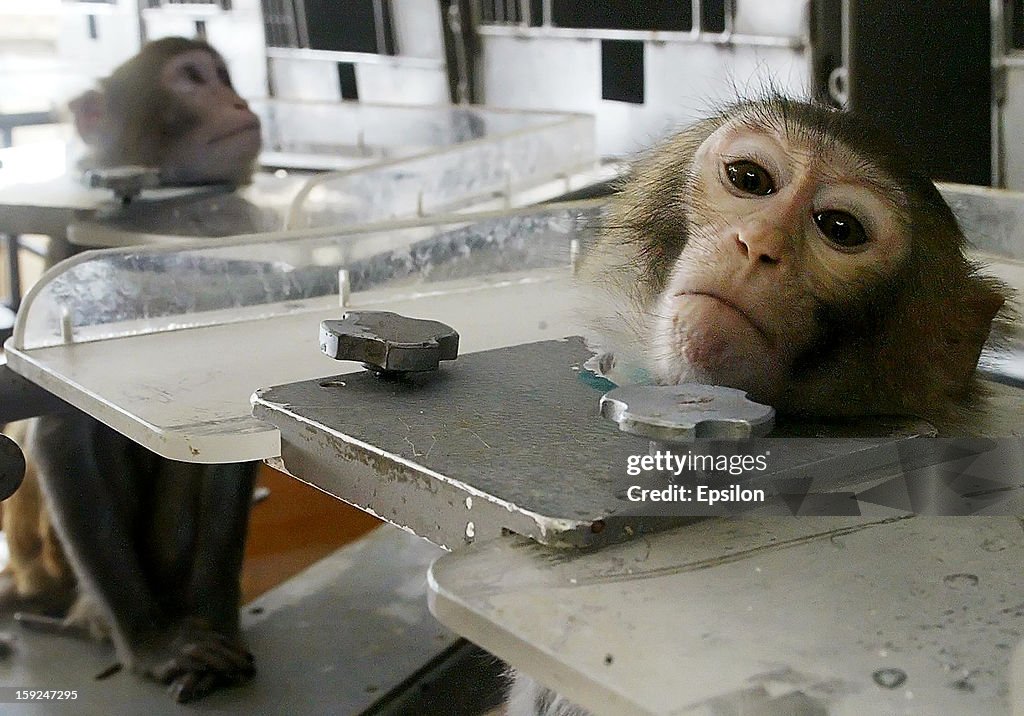
- Standard editorial rights
- Custom rights
- Animal Testing ,
- Laboratory ,
- Scientific Experiment ,
- Animal Cruelty ,
- Animal Welfare ,
- Healthcare And Medicine ,
- Medical Research ,
- Moscow - Russia ,
- AI Generator
Russian Scientists Test Health Effects Of Life In Space On Monkeys
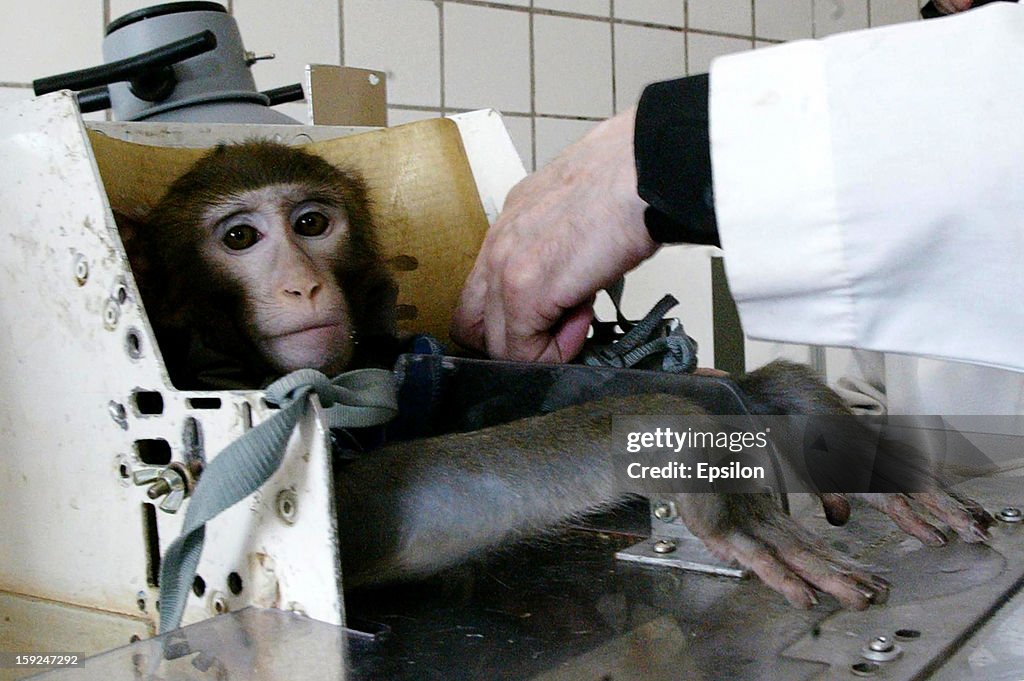
- Standard editorial rights
- Custom rights
- Laboratory ,
- Animal Cruelty ,
- Animal Testing ,
- Animal Welfare ,
- Healthcare And Medicine ,
- Medical Research ,
- Moscow - Russia ,
- Preparation ,
- Scientific Experiment ,
- Scientist ,

IMAGES
COMMENTS
The use of monkeys in research remains controversial and has been the subject of vigorous campaigning by animal rights groups in the past. Many independent and expert enquiries such as the Weatherall Report have concluded that there is a strong case for using monkeys to advance scientific and medical knowledge and to assess the safety of new ...
"The shortfall of monkeys began in 2018 and their overall demand increased when the pandemic struck", says Sheri Hild, an NIH program director for primate research. The strongest case for continuing to use monkeys in experiments is for research on diseases like HIV and Ebola: diseases that monkeys are known carriers for.
The supply of monkeys for research is shrinking, and access to remaining animals is becoming increasingly unreliable. That's the dire message of a U.S. National Academies of Sciences, Engineering, and Medicine report released today, which concludes that the situation is compromising critical biomedical research now—and will continue to do so well into the future.
The sprawling, 200-acre complex would house an unusually large number of monkeys, which will then be sent out to universities and pharmaceutical companies for medical research.
Research with nonhuman primates (NHPs) - monkeys for the most part - has led to critical health advances that have saved or improved millions of human lives. While NHPs account for just one-half of one percent of animals in current medical research, it is no exaggeration to say they are essential to our ability to find cures for cancer ...
The US government is investing heavily to breed more monkeys at the national facilities that house primates for biomedical research, Nature has learnt. The goal is to offset an ongoing shortage of ...
The sanctuary is a 17-acre rural compound where research animals can live their remaining years when their studies are done. A report released on Thursday, May 4, 2023, says a shortage of monkeys available for medical research undermines U.S. readiness to respond to public health emergencies. (AP Photo/Carrie Antlfinger, FILE)
But now, they can fetch around $55,000. The huge demand for research monkeys and their rising costs have created a market for monkey smugglers, says Anne-Lise Chaber, a veterinary physician who ...
Skip Bohm, the associate director and chief veterinary medical officer at the Tulane National Primate Research Center outside New Orleans, said the discussion for a strategic monkey reserve ...
There's a shortage of monkeys available for medical research and the U.S. should expand its breeding programs rather than rely on international suppliers to solve it, an influential scientific ...
For 16 years, I worked as a professor for medical schools in Wisconsin and Oregon. Both universities had primate centers. ... research monkeys often get a lifetime — especially if they lose it ...
While NHPs account for just one-half of one percent of animals in current medical research, it is no exaggeration to say they are essential to our ability to find cures for cancer, AIDS, Alzheimer's, Parkinson's, obesity/diabetes and dozens of other diseases that cause human suffering and death. Research with monkeys is critical to ...
Primates in Medical Research: A Matter of Convenience, not Sound Science. In Beaverton, Oregon, in one of seven National Primate Research Centers, a rhesus macaque sits in a cage awaiting her fate in an Alzheimer's disease experiment. She is one of more than 100,000 monkeys-regarded by some neuroscientists as key to understanding dementia ...
The most-often used monkeys in medical research are: Rhesus macaques (Macaca mulatta), Cynomolgus macaques (Macaca fascicularis) and Marmosets (Callithrix jacchus). Monkeys currently make up only 0.1% of the animals used in research in Great Britain.. Why are monkeys used in research? Human biology and disease can be studied in Monkeys because they are very similar to humans; biologically ...
The importation of monkeys used in medical research is strictly regulated, requiring paperwork that attests that the primates have come from breeding facilities.
The ethics of medical research on monkeys The use of monkeys in scientific research is a contentious issue because of ethical concerns about animal welfare. The team said it followed Chinese laws ...
In 2019, Cambodia supplied 8,571 of the 33,818 research monkeys imported to the U.S., or 25%. In 2021, the number of monkeys from Cambodia more than doubled to 18,870, making up nearly 60% of the ...
04.07.22. "The population size is reducing at an alarming rate," Malene Friis Hansen told VICE World News. She is a co-author of the IUCN report and a member of the organisation's Primate ...
Answers for Medical research monkey crossword clue, 6 letters. Search for crossword clues found in the Daily Celebrity, NY Times, Daily Mirror, Telegraph and major publications. Find clues for Medical research monkey or most any crossword answer or clues for crossword answers.
New research has uncovered an intriguing advantage human vision has over that of our monkey cousins. Thanks to small differences in the structure of the retina, our eyes are able to perceive a ...
Rotational dynamics versus sequence-like responses Mikhail A Lebedev1,2 1Center for Bioelectric Interfaces of the Institute for Cognitive Neuroscience of the National Research University Higher School of Economics, Moscow, Russia 2Department of Information and Internet Technologies of Digital Health Institute, I.M. Sechenov First Moscow State Medical University, Moscow, Russia
A 37-year-old man wounded by a wild monkey in Hong Kong is in intensive care suffering from infection with B virus. Although this is the first reported case of a B virus infection in a human in ...
The company, one of the largest clinical research organizations, was accused of failing to disclose purchases of thousands of non-human primates that should not have been imported into the U.S ...
The use of stone tools by the white-faced capuchin monkeys was first noticed by a botanist. In 2004, while collecting observations for her book Guía Botaínica del Parque Nacional Coiba (Botanical Guide of Coiba National Park), Alicia Ibáñez noticed that some of the monkeys living in Coiba National Park used rocks to crack open sea almonds. "It was just kind of offhandedly mentioned and ...
A monkeys during testing at the Medical and Biological Problems Laboratory on April 15, 2003 in outside Moscow, Russia. Russian scientists at the country's top space medicine centre use animals to... Get premium, high resolution news photos at Getty Images
MOSCOW, RUSSIA - APRIL 15: Russian scientists prepare monkey during testing at the Medical and Biological Problems Laboratory on April 15, 2003 in outside Moscow, Russia. Russian scientists at the country's top space medicine centre use animals to test the health effects of life in space. (Photo by Dmitry Korotayev/Epsilon/Getty Images)
RI of Public Health and Healthcare Management. The Scientific-Research Institute of Public Health and Health Management was established in 2002. The Institute is composed of the managerial board and 8 scientific compounds (4 divisions and 4 independent laboratories). The Institute's personnel consists of 82 academic staff, including one ...